BANKING
Scottsdale looks to open its first community bank in over a decade

ROSH HASHANAH
A special partnership for this year’s Kever Avot


Scottsdale looks to open its first community bank in over a decade

ROSH HASHANAH
A special partnership for this year’s Kever Avot

On Saturday, Sept. 14, East Valley JCC CEO Rabbi Michael Beyo was walking home with his two children from morning services. At around 8:45 a.m., two people in a white sedan heading toward the trio veered closer to the curb and threw a glass bottle from the passenger side in the direction of Beyo.

“[The passenger] with his head and torso out the window looked at me as the car drove away from us and shouted something that I did not understand,” Beyo said. “When the object smashed on the ground, a few feet from behind us, is when I knew that it was glass.”
After Beyo confirmed no one was harmed, he had the unenviable task of explaining to his children what happened and why.
After the incident, Beyo’s wife, Karolyn Benger, filed a report with the Phoenix Police and ADL Arizona. She also took to Facebook and Twitter to implore people to be vigilant, and remind their non-Jewish friends that the Jewish community still needs their support.
Though the police haven’t found the person who threw the bottle yet, Beyo has received an enormous amount of support from the community. He and Benger have been overwhelmed by the kind words, notes, emails and retweets raising awareness about the situation. “These negative instances only highlight how much more good there is in the world,” he said.
In an effort to boost global agriculture, the University of Arizona has signed a memo randum of understanding with the Jewish National Fund and Israel’s Arava region to establish The JNF Joint Institute for Global Food, Water and Energy Security.

The memorandum was signed on Sept. 12 by JNF President Dr. Sol Lizerbram, JNF Joint Institute Project Co-Director Udi Gat and Dean of UA’s College of Science and Vice President of Innovation Dr. Joaquin Ruiz.

The Joint Institute is focused on develop ing and introducing new technologies to

Oakland, California, may not be one of the first places that come to mind when you think about fall travel, but the quirky and diverse city has plenty to offer visitors — including rich Jewish life and resources. Go to Page 13 for more.
 NICK ENQUIST | STAFF WRITER
NICK ENQUIST | STAFF WRITER
NICK ENQUIST | STAFF WRITER
NICK ENQUIST | STAFF WRITER
While the motive remains unclear, Carlos Galindo-Elvira, the regional director of ADL Arizona, denounced the act as anti-Semitic.
“There is absolutely no excuse for a rabbi and his family members to be subject to this type of harassment while walking home after Shabbat services — it is reprehensible anti-Semitism,” Galindo-Elvira said. “To be clear: Attacks like this have no place here or anywhere within our Arizona community.”

Unfortunately, this is not the first time Beyo has been the victim of anti-Semitic behavior. When he was growing up in Italy, he said, he experienced many forms of anti-Semitism firsthand.
“The level of anti-Semitism that I experienced in Europe is very different than in the USA,” Beyo said. “Ever since I was a child in Italy, I would see swastikas on walls or other anti-Semitic graffiti, and have been physically attacked. I vowed that I would never back down.”
Beyo, who wears a kippah, added, “I am a proud Jew and I will never be afraid to show my Jewish identity.”
The day after the incident, Beyo shared what happened at an EVJCC interfaith event titled “Conversations with the Rabbi,” during which he spoke with Imam Faheem Arshad of the Ahmadiyya Muslim Community about being part of a minority religion in America.

Despite being unsettled by the bottlethrowing, Beyo didn’t let the incident affect his feelings about the event. In fact, he said, it only strengthened his decision to have an interfaith dialogue and to build relationships with other communities.
Beyo wanted to make it clear that he is not ashamed or scared to be a Jew, though it is obviously more dangerous now. He wants the community to embrace and be proud of its heritage.
Beyo referenced the French social media hashtag movement #TousAvecUneKippa



January 4
January 11
January 18
January 25
February 1
February 8
February 15
February 22
March 1
June 7
June 21
August 9
August 30*
September 6
September 13
September 20
September 27
October 4
listening to anything I have to say,” he said.
Above all, Beyo wanted to make it clear that he would not let a few anti-Semites define America or Phoenix for him, and that he would continue to build bridges of understanding.
“Muslims, Jews, other minority religions, races and ethnicities — all minorities are feeling threatened,” Beyo said. “Yet, if we stand together, we are no longer a minority. Together, we are stronger than the hate and together we will overcome it.” JN
12701 N. Scottsdale Road, Suite 206, Scottsdale,
March 15
March 29
April 5
April 12
April 19
May 3
May 17
May 31
October 18
November 1
November 15
December 6
December 13
December 20
*Annual Directory
EDITORIAL DIRECTOR | Liz Spikol
MANAGING EDITOR | Rich Solomon
STAFF WRITER | Nick Enquist
CONTRIBUTORS | Joel Zolondek
ADVERTISING SALES CONSULTANTS | Jodi Lipson

CIRCULATION | Bill Sims
GRAPHIC DESIGNER | Frank Wagner
help build food, water and energy security in vulnerable global communities.

“It’s exciting to combine expertise to work on problems related to the food, energy and water nexus — one of the grand challenges that is facing all of us,” said Dr. Kim Ogden, UA interim vice president for research. “Because of our location, Arizona is truly a living laboratory, and the hands-on training that we will be able to provide can be used for real-world solutions.”
UA has done a good deal of research on land affected by dry climate with limited vegetation, and is a leader in water sustainability research through the university’s Water Resources Research Center. The program’s mission is to help understand water management and policy issues.
Water sustainability is a critical concern in both Arizona and Israel. Both UA and the JNF are members of the International Arid Lands Consortium, which explores ways to improve the lives of people living in the arid and semi-arid regions of the world.
“Israel’s south and America’s Southwest know the challenges of farming in arid regions all too well,” Lizerbram said. “Today, both Israel and America lead the world in the development of innovative farming methods for arid areas and this initiative will empower African farmers by democratizing access to agricultural training and knowledge sharing.”
In addition to signing on with the Joint Institute, UA has partnered with Israel for other global cooperation initiatives. In 2017, UA created a partnership with the Ben-Gurion University of the Negev and the Universidad Nacional Autónoma de México to focus on developing and researching new technologies in six different sectors. One of those sectors included arid lands agriculture and water.

The groundwork for the Joint Institute began more than a year ago, according to Matt Fragner, who serves as co-chair for JNF’s Arava and Eilot Task Force. Fragner, who has worked with the Arava and Eilot Task Force for seven years, is leading the planning efforts for the new Joint Institute.

Fragner admitted that initially he didn’t have high hopes for the new institute, but after meeting with participants from the Arava and UA, he saw that both entities had a lot to teach each other.
“As a non-academic lawyer with no formal scientific or governmental experience, I feel very lucky to be part of something that’s more than negotiating long transactional documents between private parties,


something that could move the needle for many underserved people,” Fragner said.


In November 2018, JNF brought a group of roughly 20 — including representatives from UA — to the Arava region. They toured the Arava International Center for Agricultural Training and the Arava Institute for Environmental Studies, which teach students about environmental sustainability.
“I looked up at our partners from Arizona and saw their eyes literally shining as they listened to the students talk about their experiences,” Fragner said.
The feeling was mutual when Arava’s representatives visited UA’s agricultural projects.
For the Joint Institute, the focus on sustainability is broken down into two components: environmental and cultural. The environmental aspect of the project seeks to have a positive environmental impact that doesn’t deplete resources that are difficult to replace or re-utilize.
But the cultural component is also necessary to ensure that the environmental projects are successfully integrated into the social environment.
JNF Chief Israel Emissary Talia Tzour Avner explained that a great sustainable solution might not be as well-received if it doesn’t integrate with the local culture. She said that it could be a waste of time and resources to develop an idea that ultimately gets rejected.
“For example, if we come up with a great idea on how to grow corn for a community but it turns out that community doesn’t eat corn, we’ve actually created a problem,” Tzour Avner said. “If we bring them something that they don’t use, eat or even cook with, then what was the point?”
To help understand the cultural differences, UA brought on professors of anthropology to assist with research. Tzour Avner said that their contribution is just as valuable for the progress of the Joint Institute.
Right, now Tzour Avner said that the institute is focusing on finding the communities that would benefit from their help the most. She hopes that the institute will have more substantial projects in Africa by the end of next year.
“This really is an unprecedented program for our region, which promotes cooperation between students and farmers in developing countries together with JNF, Israel’s Arava region and UA to identify the places in which we will work while finding solutions and equipping these farmers with useful solutions,” Gat said. JN

The community is invited to attend a Memorial Service Sunday, October 6th, 9:30 a.m. Beth El Cemetery • 2300 W. Van Buren Rabbi Nitzan Stein Kokin will officiate.
 KATHY SHAYNA SHOCKET | CONTRIBUTING WRITER
KATHY SHAYNA SHOCKET | CONTRIBUTING WRITER


George Weisz, president of Weisz Ventures, has held many diverse titles throughout his career and community involvement, including Jewish community causes and serving on Jewish community boards.
Now, in his newest role as chairman of the board of directors of the Scottsdale Community Bank, he is busy making his longtime vision become a reality.
In April of 2017, the Scottsdale Community Bank became the first of three new community banks in the Phoenix area to be approved for “in organization.”

The approval from the Arizona Department of Financial Institutions allowed SCB’s board to organize and begin raising $16 million in capital by selling shares.
“A minimum investment is relatively low at $10,000, as described in the offering circular,” said Weisz, who — along with the board and newly hired CEO and president Neill LeCorgne — is busy meeting with potential investors and industry colleagues.


“We are working toward filing a formal charter application with the federal and state authorities in the next 30 days,” says an excited Weisz.
The other community bank more recently granted “in organization” is Scottsdale-based bank Gainey Business Bancorp. The proposed Discovery Business Bank, a Chandler group, has filed its “in organization” application.

“Based on our timeline, “ said Weisz, referring to being the first community bank to be recognized by the Arizona Department of Financial Institutions, “we expect to be the first community bank established in Arizona in 10 years.”
LeCorgne, who has more than 34 years experience in the financial industry, is currently moving from Florida and is now a senior consultant for one of the top financial technology firms in the nation.
In addition to LeCorgne, they’ve also hired a designated CFO and designated COO. An exact location for the bank will be




determined upon the final approval. Two of the SCB’s founding investors are familiar names in the Jewish community.

“We are proud to have Frank Jacobson,



Both are residents of Scottsdale,” said Weisz. “There’s plenty of business for the few community banks we have in our state — a state that’s growing by leaps and bounds.” Weisz also pointed


co-owner of two minor league baseball teams and his partnership in Majerle’s Sports Grill. Not to mention that his father was on the board of directors of the Harris Bank in

“WE HAVE WAITED SEVERAL YEARS AND OUR RESEARCH SHOWS CLEARLY THAT NOW IS THE RIGHT TIME TO OPEN A COMMUNITY BANK. THERE ARE NOW OVER 18,000 BUSINESSES IN SCOTTSDALE WITHIN OUR MARKET AREA, BASICALLY IN THE CENTRAL CORE OF SCOTTSDALE, THAT MEET OUR LOAN AND BUSINESS RELATIONSHIP CRITERIA.”
“We have waited several years and our research shows clearly that now is the right time to open a community bank,” Weisz said. “There are now over 18,000 businesses in Scottsdale within our market area, basically in the central core of Scottsdale, that meet our loan and business relationship criteria.”
Weisz explained that the model of his community bank is not to gather checking and savings accounts, nor target what is called retail banking.
“Our model is to provide loans to small and medium sized businesses which are sorely underserved in our market,” he said. “We will be combining true relationship banking with the latest and greatest fintech technology and we will make house calls.”
the retired vice president of philanthropic services of Jewish Family & Children’s Service, and Leslie Dashew, one of the nation’s experts on family businesses and family wealth, who has authored four books on the subject.
to what he says is a resurgence of community banks nationwide.
Weisz’s vast professional experience has prepared him for his leadership of the new bank, including 31 years in public service, his ventures as
Chicago, now BMO Harris.

Scottsdale’s thriving economy was also a factor for Weisz and his co-founders to move forward after more than seven years of planning and waiting for the right time.

Honor someone you love. Buy a letter, word, verse, or chapter and a certificate will be sent signifying the link to our ancient past. Now everyone can participate in the sacred act of writing a Torah





Fintech is a portmanteau of “financial technology” and refers to technological innovations that compete with traditional financial services.
“It’s a win-win concept for both our shareholders and the community.” JN
It’s a community no one chose to be a part of, but the support members find from within it has been invaluable. Recently, families of victims and survivors of the Oct. 27 massacre at the Tree of Life building joined with those from nine other cities that have been terrorized by gun violence at the Healing Through Love Meditation Retreat in Barre, Massachusetts. The three-day mindfulness and meditation retreat, held at the Barre Center for Buddhist Studies, was the first gathering of its kind, aiming to provide survivors and victims with coping techniques to manage the continuing suffering they experience, as well as to connect them with others who are going through similar trauma.
The retreat brought seven survivors of the Pittsburgh massacre together with those from locations whose names are now inextricably linked to gun violence, including Parkland, Aurora, Las Vegas, Chicago and Columbine. A total of 43 survivors were brought to the retreat, set in a forest about an hour and half from Boston, along with 12 therapists and meditation instructors.
“To meet with other families who had been through this made a huge difference,” said Marnie Fienberg, daughter-in-law of Joyce Fienberg, one of the 11 people murdered in the Tree of Life building. “You wanted to connect with them.”
The retreat was fully funded for all participants, including airfare, lodging and food, underwritten by the Hemera Foundation. All therapists and instructors volunteered their services.
Conceived of by Sharon Salzberg, one of the founders of the Insight Meditation Society in Barre, Massachusetts, along with Shelly Tygielski, a mindfulness instructor in Broward County, Florida, who has been providing help to those affected by the February 2018 shootings in Parkland, the retreat aimed to “offer tools that people might use for greater healing and resilience,” said Salzberg, who has been teaching meditation for 45 years.
The retreat originally was conceived to provide training for Parkland survivors, but after a contingent of those survivors came to visit Pittsburgh in April 2019,
they suggested Pittsburgh survivors be included. Once Pittsburghers were included, survivors from other shootings were invited as well, according to Tygielski.
Leigh Stein was on board as soon as she heard about the retreat, viewing it as “a chance to learn helpful tools and surround myself with others that understood my thoughts in a peaceful and calm environment — without even saying one word.”
gave me so much strength, and that was a tremendous positive. It was good for me to get away.”
Giving survivors a chance to get away to a beautiful and peaceful environment, along with others who understand their pain, was one of the aims of the retreat, according to Tygielski.
“We thought it would be really great to get people out of their element and really feel like they are in a safe container, that they are removed from their day-to-day
she just went through it. There is nobody else out there who can say that to us and really know. These people really get it, and they understand the ups and downs.”
Mindfulness and meditation sessions at the retreat offered “practical tools that people can take home with them and continue to practice,” Tygielski said.

Fienberg has already been using some of the breathing exercises she learned at the retreat in dealing with insensitive questions and comments from people.
“People say things, and they totally don’t intend to, but they are not nice,” she said. “They don’t mean to, they are just being curious. But we are not the people to be curious with, we are the family members. What they have found is, if you have tools to help you calm down and relax and take a breath and see the intention of the question, you will have a better experience, that person will be answered, or if you need to tell them to back off, you can do that as well.”
Sharyn Stein is also utilizing some of the techniques she learned in Barre as the one-year remembrance of Oct. 27 approaches.
“As the time gets closer, there is a lot going on, and I find that I am just falling apart,” she said. “And I take myself back to Barre, Massachusetts, and say, OK, just use those breathing techniques. Try.”
The retreat was non-religious, and non-political.
“It was exactly what I needed and could not have come at a better time, just days after the El Paso and Dayton shootings,” said Stein, whose father, Dan Stein, was murdered in the attack at the Tree of Life building. “It was comforting to be in the company of others that just ‘get it’ and are unfortunately in my shoes.”
Stein’s mother, Sharyn Stein, also attended the retreat.
“I needed to go because this community is wonderful and supportive and loving and kind, but it is very difficult to go out to the streets of Squirrel Hill and have it with you constantly,” she explained. “I just needed a break. I just needed to go and have peace and quiet and not rely on people I knew, and I felt the people I met were so amazing and
environment for several days and, more importantly, that they are around people that they don’t have to wear a mask around,” she said. “And they don’t have to explain anything because everybody that’s there understands their story, the language of loss, the depth of their grief.”
Being with others who had experienced trauma similar to hers was comforting, and also “gave hope” to Ellen Leger, whose husband Dan Leger was shot and seriously injured at the Tree of Life building. “They can pass down information,” Leger said. “Like one girl from Las Vegas, she kept telling us from the beginning, ‘You are coming up to your one-year anniversary, be ready for it, it’s going to be terrible, it’s going to be difficult but you are going to get through it,’ because
In addition to survivors of mass shootings, five women from Chicago whose sons had been killed by guns in isolated events were invited as well. Part of a group called Purpose Over Pain, the Chicago mothers were sponsored by the Obama Foundation.
“They were able to bring a completely different perspective,” noted Tygielski.
Several Pittsburgh participants mentioned connecting deeply with some of the mothers from Chicago, and noted that regardless of the circumstances surrounding the killing of a loved one, the grief is acute.
“Some of those women from Chicago had sons killed by police officers,” noted Dan Leger, “and there was a woman on the other side of the room whose husband was a police officer who was killed during a drug interaction, trying to make
an arrest. And here they are.”
Dan Leger was reluctant at first to attend the retreat, he said, but ultimately found the experience to be profound.

“My reluctance was because, first of all, trust is a factor that has been tampered with here, and so really trying to make sure that anything that is offered to us as victims is something that is trustworthy is sometimes hard to distinguish,” he said. “Many people offer things to us that are really ways for them to feel better than to genuinely make us feel better. And they are not aware of that, but it becomes a burden in some way. Then, there are other people who, might plainly, want to just take advantage of us, and so that was my reluctance.”
Additionally, because of his injuries, “the idea of leaving town, getting on an airplane, physically is not something that is pleasant for me,” he added.
But the program “gave everybody enough space so that quiet that permeated some of the exercises just really gave that opportunity for people to either go to the place that they needed to resolve — such as in my case some of those dark


places — or to go to a place where they were in touch with how far they had come or wherever they needed to travel. It was a great gift.
“I felt grateful to be there,” he added. “The kindness of strangers never ceases to be just so heartwarmingly present, the generosity and the kindness.”
Maggie Feinstein, director of the newly created Pittsburgh Resiliency Center, also attended the retreat “as a learner,” she said.
“I am interested in these peer networks, what do we do to strengthen them, what is the right dynamic, what are the ones that are healing versus maybe damaging to certain people,” she said.

Tygielski and Salzberg are already working on securing funding to hold another retreat next year, as, tragically, there is no shortage of family members of gun violence victims. Tygielski also hopes to work with Feinstein and the Resiliency Center, sharing best practices and helping to find local resources in Pittsburgh for those still processing the trauma.
“That’s the intent, to create a sort of playbook, if you will, because there is no
playbook for something like this where at the very least we can say, ‘here is a menu of things we have done that have worked and have resonated with people,’ and vice versa of course,” Tygielski said. “And there will be things that you all do that will probably be helpful and instrumental here.”
Being with survivors of other mass shootings, Ellen Leger realized how fortunate the Pittsburgh group is to have such widespread and meaningful support.
“The woman from Columbine, she said after it happened, there was nothing for her, it was just sort of ‘get on with your life,’” Ellen Leger said. “We have had such phenomenal support from minute one, from everybody in the Jewish community, the Pittsburgh community. People have gone through similar experiences with none of that, and still they manage to get from one day to the next.”
Although Fienberg “didn’t want to be part of this group,” she said she is “very grateful that there are people looking out for us and thinking about how we help each other, and I am very hopeful that in the future I can return that and pay it
forward as well.”
Sharyn and Leigh Stein have already been corresponding with people they met at the retreat, drawing strength from one another.
“I met amazing people, and we really have a bond, and it’s helpful,” said Sharyn Stein.
Her daughter, Leigh, considers her Barre friends her “meditation mishpacha.”
“I feel like I have known these people forever,” Leigh Stein said. “Everyone instantly bonded. Unfortunately we are all in the same boat. We have all been affected by gun violence.
“I am now in a ‘group,’” she continued. “A group that I would give anything to get out of but I can’t. I am stuck in this group for the rest of my life. Only other members of this group understand. That powerful connection was what meant the most to me during my time in Barre. In a world that can make us feel so isolated and misunderstood, connecting with others that ‘get it’ is life-giving.”JN
This article was originally published in the Pittsburgh Jewish Chronicle.
Tel Aviv neighborhood ranked 15th coolest worldwide Kerem Hateimanim and Shuk HaCarmel in Tel Aviv ranked 15th overall in Time Out magazine’s rankings of the world’s coolest neighborhoods.
“Kerem Hateimanim is a progressive hotbed of sun-chapped surfers, strolling Filipino caretakers, hungry foodies, global nomadic types and ageless Yemenites hawking home-cooked deliciousness straight out of their ground-floor kitchens,” the magazine wrote.
“A smattering of the quaint one-storey buildings have been swapped out for sleek apartment complexes, but the Kerem’s authenticity has remained, flanked on one side by a glittering stretch of Mediterranean Sea and on the other by the sprawling Shuk HaCarmel: Tel Aviv’s best known market and the neighbourhood’s coolest hangout,” it continued.
Israelis increasingly vacationing in Sinai
More than 1 million Israelis have crossed the Taba border between Eilat and Egypt in 2019 — a 30% increase — as vacationing in the Sinai has become more popular, Globes reported.
The Israel Airports Authority said it expects about 150,000 tourists to visit the peninsula during the upcoming Jewish holidays, even though the Egyptian army is fighting multiple terrorist groups there, including the Islamic State. That will include about 35,000 visitors between Sept. 25 and Oct. 1 around Rosh Hashanah and 20,000 before around Yom Kippur.
Tourism to Egypt is impacting domestic tourism, according to an Authority report. Armenia to open embassy in Tel Aviv
Armenia said on Sept. 19 that it plans to open an embassy in Tel Aviv — the 90th overall in Israel — by the start of 2020, a sign of improving relations between the country and Israel, The Jerusalem Post reported.
“Israel is an important player in the Middle East,” Foreign Minister Zohrab Mnatsakanian said in a cabinet meeting. “The opening of the embassy will contribute to the deepening of bilateral relations and protection of Armenia’s interests in the region.”
The move is seen as strengthening the Armenian Apostolic Church’s presence in Israel.
A reciprocal move by Israel to open an embassy in Yerevan was welcomed,
Mnatsakanian said.
Foreign Minister Israel Katz said Armenia’s announcement was a “significant step in the development of bilateral relations” between the two states.
Formal diplomatic relations were established between Israel and Armenia in 1992, but Armenia’s ties with Iran and Israel’s relationship with Armenia’s foe Azerbaijan have put a damper on things. In recent years, the relationship warmed, with officials from each country visiting each other.
With a goal of raising money to provide sandwiches for financially challenged Israeli schoolchildren, celebrity Israeli chef Eyal Shani rapped in a YouTube video, JTA reported.
“There are some things that, for them, I am ready to sing,” he says at the start of the video.
Shani was rapping on behalf of NEVET: Sandwich For Every Child. NEVET, which means sprout, is an organization that provides sandwiches each day for thousands of children. It was founded by Leket Israel, a food rescue group.
Shani, who was a judge on Israel’s Master Chef, is known for his restaurant chain Miznon, with branches in New York, Paris, Vienna and Melbourne. In 2019, he opened a branch of his HaSalon restaurant in New York City.
A reorganized American Hebrew Academy will reopen for the 2020-21 school year and welcome non-Jewish students, JTA reported.
“By expanding our admissions to a broader population of students, we are confident the academy will thrive,” trustee Glenn Drew said in an interview with the Greensboro News & Record.
The private boarding school in Greensboro, North Carolina, which closed in June because of financial woes, is expected to announce a new name, student recruitment campaign and a website in the weeks ahead. In the first year, classes will be held for ninth-, 10th- and 11th-grade students
The school’s curriculum will still include Jewish studies, Jewish philosophy and Hebrew, Drew said.
Head of School Abe Tawil is expected to return, as are many prior administrators and faculty members.
The school debuted in 2001, but lost money every year, according to the News & Record. Its enrollment in 2018-19 was 134 students.
Sign language group defends hooked nose gesture for ‘Jew’
The Flemish Sign Language Center in Belgium defended the use of a hooked nose gesture for “Jew” in its video sign language dictionary, according to JTA.
The Belgian government-recognized group said in a statement that the gestures weren’t meant to offend and have been online for years. The center, which has a website hosted by the University of Ghent, did add the words “negative connotation” to videos that depict sidecurls and a long nose.
The response came after the European Jewish Association protested.
The sign language center said it only wanted to “catalog and display the accepted gestures of sign language in Flemish rather than instruct speakers on how to use gestures and which ones to use,” JTA reported.
The disappearance of a banner on Sept. 8 that said “Office of Jewish Student Life” outside Lehigh University in Bethlehem is under investigation by campus police, The Morning Call reported
Rabbi Steven Nathan noted that while the theft might not seem like a big deal, the similar disappearance of a metal sign from the center in the spring and rising anti-Semitism in general is concerning.
“It would be easy to say, ‘Oh this was just a prank,’” he said. “But why did they choose our building? ... To me, this is some sort of intent there to send a subtle message like, ‘We want to rattle you a little bit. We don’t necessarily think you belong here or we want to make you feel a little bit uncomfortable.’”
A swastika was found on a Jewish student’s dorm room door on Sept. 15 at Tufts University — two days before Holocaust scholar Deborah Lipstadt spoke on campus about rising anti-Semitic rhetoric, JTA reported.
Tufts President Anthony Monaco said the incident was a “cowardly act of hatred and ignorance” and a “direct attack on our Jewish community and an affront to our values as an institution.”
Lipstadt thanked Tufts for its quick response, but cautioned that the university should not be considered a place where there is anti-Semitism and to “keep things in perspective.” JN

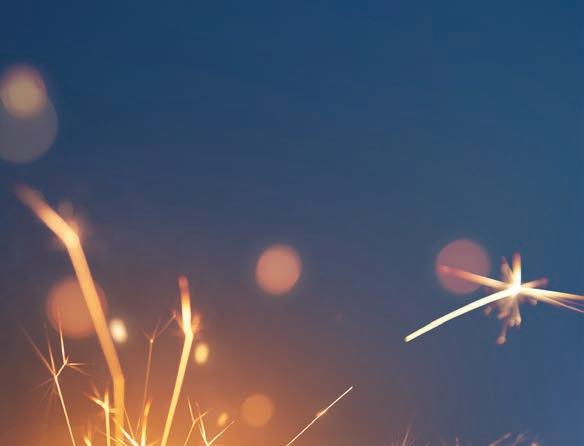










It has been a very long and difficult year for our Jewish community.
From deadly synagogue shootings by white supremacists, to verbal attacks on Israel from the political left, and continuing with the spread of anti-Semitism and attacks on Jews, it was easy to feel under siege during the past year.
We are fortunate that our defense agencies have been vigilant and quick to respond, and appreciate that their actions have drawn attention and support, and have helped highlight the seriousness of the attacks. And we marvel at the scope of the response from our organized Jewish communal agencies who have provided care and comfort to those affected. For all of that important, life-sustaining work, we are thankful.
But there was another phenomenon that took place during the past year. It was described by New York Times columnist Bari Weiss, author of “How to Fight Anti-Semitism.” Weiss, a native of Pittsburgh, Pennsylvania, said her
first thought after learning of the Tree of Life attack was to recall the old-style European pogroms. But she found a very important distinction. The pogroms were government-instituted attacks on Jews, and the authorities looked the other way.
defend us and stand by our side wasn’t, like, a favor. It was them standing up to defend their values and their right to live full and unashamed lives.
“And that gives me a tremendous amount of hope that people really under-
IT IS BOTH COMFORTING AND EMPOWERING TO SEE THAT THE RESPONSE TO ANTI-SEMITISM IS EXPANDING BEYOND OUR JEWISH BROTHERS, SISTERS AND VICTIMS AND INCLUDES THE ACTIVE SUPPORT AND CONCERN OF PEOPLE OF GOODWILL EVERYWHERE.
That was not the case in Pittsburgh.
“There was just an absolute outpouring of solidarity, and a real visceral sense from our neighbors that an attack on the Jewish community was an attack on them, too,” she said. “And coming forward to
The one thing we know for sure about last week’s Knesset elections is that, at least as of press time, no one knows the final configuration of Israel’s next governing coalition. But that doesn’t stop anyone from prognosticating about it in reaction to an Israeli electorate that has created a virtual reprise of last April’s political deadlock that prompted the second round of voting.
The three leading vote getters were the centrist Blue and White party, led by former IDF Chief of General Staff Benny Gantz, with 33 seats, Prime Minister Benjamin Netanyahu’s center-right Likud party with 31 seats, and the Arab Alliance’s Joint List, representing the political parties of Israel’s Arab citizens, which surged to 13 seats. And then there is Avigdor Lieberman’s rightward leaning Yisrael Beiteinu — the secular, largely Russian party, which won eight seats, and whose refusal to join a governing coalition that included haredi parties forced last week’s re-vote.
Initial predictions crowned Lieberman as the likely “kingmaker” in the coali-
tion building sweepstakes, since neither Netanyahu nor Gantz appeared able to form a governing coalition without Yisrael Beiteinu’s support. And so Lieberman’s demand for a national unity government — composed of Likud, Blue and White and Yisrael Beiteinu, and excluding the
stand that rising anti-Semitism — the most obvious victims are the Jews,” she added. “But the other victim, the one that we forget about, is everyone else.”
Anti-Semitism is spreading. The AntiDefamation League reported that there
were 1,879 anti-Semitic incidents in 2018, the most recent year recorded. As the threat to our communities increases, it is easy to feel hopeless, helpless and alone. But our tradition teaches that what we do as individuals and as a community matters. And it is both comforting and empowering to see that the response to anti-Semitism is expanding beyond our Jewish brothers, sisters and victims and includes the active support and concern of people of goodwill everywhere.
As we enter the New Year of 5780, let’s commit to strengthening our communal support to help all of those in need, including all of those who are victims of harassment and hate. In doing so, let’s follow the example of those who have joined us in our battle against the corrosive evil of anti-Semitism, and make this world a better place.
We wish our readers and friends, and our entire community, a sweet, safe and rewarding New Year. JN
of the intended unity coalition refusing to join a Netanyahu-led government, others insisting that they would only join if Netanyahu leads and still others favoring some form of shared leadership. Then came the Joint List’s endorsement of Gantz over Netanyahu for the prime
NETANYAHU’S FUTURE IS BOTH CLOUDY AND CONTROVERSIAL, WITH SOME MEMBERS OF THE INTENDED UNITY COALITION REFUSING TO JOIN A NETANYAHU-LED GOVERNMENT, OTHERS INSISTING THAT THEY WOULD ONLY JOIN IF NETANYAHU LEADS AND STILL OTHERS FAVORING SOME FORM OF SHARED LEADERSHIP.
religious parties — presented a potentially attractive solution. But what role would Netanyahu play in such a power sharing arrangement?
Netanyahu’s future is both cloudy and controversial, with some members
minister position — giving Gantz the first chance to form a new government — even though the Arab Alliance has made clear that it will not join a Gantz-led coalition.
So what’s next? We probably won’t know for several weeks, as the
government formation and coalition building process plays out under the supervision of Israel’s president, Reuven Rivlin. But two things seem clear: No one wants another deadlock, which could lead to yet a third round of voting, and the decision regarding Netanyahu’s role in the next governing coalition will be outcome determinative.
While there could be some surprises that could change the focus from Netanyahu to the more traditional sausage-making exercise of coalition building, that doesn’t seem likely. But, if some quick resolution to Netanyahu’s corruption charges is reached, or if the haredi parties accept Lieberman’s conditional offer for them to join a Netanyahu-led coalition by agreeing to Lieberman’s list of policy demands, the whole unity government effort would likely dissolve. That said, no one puts much hope in either thing happening.
Instead, the creativity of Israel’s political wizards will continue to be tested as they search for a solution that serves the best interests of the State of Israel. We await that result. JN
Our sages teach us that “kol hatchalot kashot,” all beginnings are difficult. This phrase feels especially resonant this Rosh Hashanah.
The man who blew the shofar last year at my Pittsburgh synagogue, New Light, is not here to blow it now. He was murdered on Oct. 27 at the Tree of Life synagogue, where the New Light and Dor Hadash congregations rented space.
The sounds of the shofar, which Ashkenazi Jews have a custom of blowing in synagogue the entire month of Elul, have a different resonance to me now. The Sefer Hachinuch explains that “the Torah commanded us to make a sound similar to wailing” when we blow it.
That won’t be hard; there is plenty to wail about this year.
The Sefer Hachinuch adds, “Since a person is physical, he is only aroused by something that arouses, like the way of
people during wartime [to] blow and even scream in order that they should be properly aroused for war … and the voice of the shofar arouses the heart of all its listeners … when he hears the broken sounds, he breaks the evil inclination of his heart for the desires of the world and his cravings.”
We need to hear this wailing, and be induced to wail ourselves, so that we can change.
The Talmud associates these sounds with the wailing of a bereaved mother of an enemy general. In Judges 5:28, the mother of Sisera wails that her son has not yet returned from battle, nor returned with any captive women or spoils.
It is hard to know how to interpret this. Even though Sisera’s mother is awful in glorifying her murderous son, she is still a mother and still has compassion for her son — it is that human piece of her we are told to identify with. Perhaps Sisera’s mother is wailing out of sheer human
instinct. Her wailing is a sign that she knows that her son will never return, though her words, possibly spoken out of false bravado, suggest otherwise.
The guttural scream of someone trying to comprehend that life will be lived without a loved one is sheer terror. I hope never to hear it again. I have been with families at the moment they received official notification from the FBI of their loved one’s deaths. Though they knew in their hearts that their loved one was gone when they did not hear from them hours before, the moment of irrevocable understanding that they will never see their loved one again is a dreadful one.
But sometimes the deepest pain can also bring healing.
The concept of post-traumatic growth is a psychological theory about transformation after trauma. It shows that people who undergo significant trauma can emerge from the experience with an improved appreciation for life, relation-
ships with others, personal strength and spiritual growth. This does not remove the many challenges and anxieties connected to coping with trauma, but adds that growth is possible, too.
When we hear the shofar, if we hear it as a wail and scream, perhaps we can change our lives and make what comes after Rosh Hashanah irrevocably different from what comes before.
I have seen it happen in my own community. People have changed over the course of the year. Some have made and kept commitments to attend synagogue more regularly. Some of our new haftarah chanters have not used the skill since Bar Mitzvah, if ever, but are committed to reading every few weeks in honor of our three devoted haftarah readers at New Light — Dan Stein, Rich Gottfried and Mel Wax — who are no longer able to chant the prophetic words. There are those who did not have much interest in the spiritual side of Judaism who now
SEE KISSILEFF, PAGE 12
Try as some politicians might to make the current Israeli election about rifts between secular and religious Israelis, both the April and September polls were about a single issue: whether or not Benjamin Netanyahu will continue to serve as Israel’s prime minister.
As part of a strategy to hurt Netanyahu and his preferred coalition partners, fiercely secular opponents have taken secondary aim at the politics of haredi Orthodox political parties, while calling for a “secular unity government.”
Since his foray into politics from his chair as a television presenter, Yair Lapid has been working to advance an anti-religious political agenda, just as his father, Tommy Lapid, did when he led the Shinui Party to 15 seats in 2003.
The younger Lapid, running on a similar agenda, secured 19 seats in 2013 as head of the Yesh Atid Party, but fell to 11 seats in 2015 following a brief and relatively unsuccessful stint as finance minister.
Today, Lapid is co-leader of the Blue and
White Party and, according to the terms of a conditional rotational agreement he signed with Blue and White leader Benny Gantz, potentially a prime minister-in-waiting.
Blue and White, a technical alliance between Lapid’s Yesh Atid, Gantz’s Resilience Party and the Telem Party under Moshe Ya’alon, was created with a singular goal in mind: to defeat Netanyahu — something no single party, including the left-wing stalwart Labor Party, was able to achieve in previous elections.
In fact, many of Blue and White’s votes in April, as well as in September, came directly from Labor, which received 24 mandates in 2015, but collapsed down to six in April and September. That 18-mandate differential by all accounts went directly to Blue and White, and accounted for the majority of Blue and White’s 33 seats following the Sept. 17 elections.
Avigdor Lieberman first entered the Knesset as part of the right-wing National Union Party that has typically been run by religious settlers. Even after Lieberman’s Russian-speaking Yisrael Beiteinu first ran as an independent party, Lieberman often
joined right-wing coalitions supported by religious parties.
In November 2018, Lieberman resigned as defense minister, citing a spat with Israeli Prime Minister Benjamin Netanyahu on the nation’s response to the ongoing conflict with Hamas in Gaza. Netanyahu preferred a softer and more cautious approach, and imposed his will on his more hawkish defense minister.
However, many believe that Lieberman resigned to get the jump on an early election season that was coming as part of Netanyahu’s strategy to insulate himself from pending indictments on multiple corruption charges.
Following April’s elections and his initial endorsement of Netanyahu as prime minister, Lieberman refused to join a right-wing government, citing the inability of the government to pass a controversial law that would increase the number of religious conscripts to the IDF. Unable to forge a compromise within his right-wing camp — and without Lieberman’s critical five seats — Netanyahu fell one seat short of a majority and forced the dissolution of the Knesset just weeks after it had been sworn in.
Throughout the September election campaign, Lieberman, like Lapid, has run on a secular political agenda. His recent maneuvers have secured Yisrael Beiteinu eight seats — three more than he achieved in April and two more than 2015. The otherwise small increases are noteworthy because the votes appear to have been siphoned away from Likud, which ended two seats behind Blue and White in the September elections, placing Netanyahu’s political future in doubt.
Together with Lieberman, Israel’s right wing would still produce a 63-seat majority. However, Lieberman, a longtime Netanyahu nemesis, seems intent on ending the reign of Israel’s longest-serving prime minister. Lieberman’s strategy has involved turning on his longtime religious political colleagues, who remain Netanyahu’s preferred coalition partners.
Now, in the absence of a clear winner in the current election, both Lieberman and Lapid have been calling for a “secular unity government” to be formed by Blue and White, Likud and Yisrael Beiteinu. The only problem with these calls is that they in no way
SEE TRAIMAN, PAGE 12
henever we read Parshat Nitzavim (literally “Standing”) we know that Rosh Hashanah is just around the corner. During Moses’ final address to the Israelites, he encourages them to be loyal to the Almighty and to observe His commandments. He recounts Israel’s history and reviews many of the laws which had already been revealed.
There are 613 commandments, which can indeed be very intimidating. Yet, Moses assures the people that the mitzvot (commandments) are well within their grasp.
It is quite fitting that Parshat Nitzavim is read on the Sabbath prior to Rosh Hashanah. It stands in stark contrast to last week’s Torah portion, in which we read the Tochecha, the long rebuke and warning about what would befall the Jews if they choose to abandon the
KISSILEFF
CONTINUED FROM PAGE 11
attend any classes we hold. People who have always wanted to learn Hebrew have been studying it for the first time.
This Rosh Hashanah, all American Jews, shocked to our core at the resurgence of violent anti-Semitism here — a country to which our ancestors immigrated as a haven from such things in the rest of the world — will hear the shofar as a wail and scream. We have undergone the deeply painful trauma of knowing that in Pittsburgh and Poway, Jews have been murdered solely because they are Jews. However, this deep trauma we have experienced also means we can and need to think about how as a community we can attempt to work through the trauma to achieve meaningful growth.
It is not uncomplicated, but Rosh Hashanah is coming, and we all have the opportunity to begin again — however difficult. JN
Torah. Nitzavim provides a much needed antidote to such negativity and reminds us that we can all please God if only we try.
WThematically, this portion is also inextricably tied to the Yamim Noraim, the Days of Awe. The word which most often comes to mind during this holy season is “teshuvah” (repentance), and the word “lashuv” (to return) appears in our parasha seven times! This reminds us that this is indeed the season of repentance, during which we can approach God with a contrite heart and expect total forgiveness for our misdeeds.
My colleague and friend, Rabbi Mark Greenspan, points to three verses in this Torah portion that make it abundantly clear that we can enter the High Holy Days expecting God’s encouragement and forgiveness: Atem nitzavim hayom lifnei Adonai eloheichem: “You are standing before the Lord Your God TODAY.”
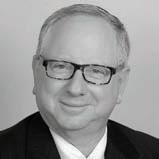
That is the spirit with which we need to come to synagogue. This verse is the beginning of Moses’ final address to Israel. He reminds them that everyone must answer to God — from the most
TRAIMAN
CONTINUED FROM PAGE 11
represent a unity approach.
The disagreements that many non-religious Israelis and political parties have with haredi parties represent significant social issues. They center around long-standing political agreements that provide exemptions from military service to religious men; disproportionately large stipends to religious learning institutions that support a majority of religious men studying Torah full-time, instead of entering the workforce; and political monopolies over key state religious services, including kashrut certification, marriage, conversion and key holy sites, such as the Western Wall plaza.
Failing to carefully address these issues fuels societal rifts that rise to the surface on an ever-increasing basis. As difficult to reach or implement in the short term as they may be, delaying resolutions will make future solutions even more complicated. Yet with significant geopolitical and security threats, economic challenges and the looming possibility of a major post-Netanyahu leadership vacuum, the formation of the next government should not hinge on its ability to suddenly solve long-standing and
important to the most lowly person. Every person counts. Everyone can stand proudly before God.
Lo itchem livadchem anochi koret et habrit hazot: Moses goes on to say: I’m not making this covenant only with you — but with those who are here and those who are not here. This is a strange expression. Who are those who aren’t present? Could it be those who are not well enough to be present or those who have become alienated from Jewish life? God is here with all of us — even the people who are not present. In other words, we are not alone. God is present and rooting for us!
We are here with the generations that preceded us and those who will follow. We have a responsibility, not to ourselves, but to all people. We are a link in a great chain of tradition.
Lo bashamayim hee : Moses goes on to encourage Israel by telling them that living a life of Torah is not too difficult or too demanding for them. Lest they think the Torah is too abstract or too demanding or too foreign, Moses says,
“Lo bashamayim hee,” The Torah is not in heaven: It is as close to you as your own heart. If you want, you can live up to this unique challenge. It is up to you to make the Torah your own.
Parashat Nitzavim primes us for “Jewish Prime Time” — Rosh Hashanah and Yom Kippur. Let us venture into the Days of Awe confident that we all count, that God is with us and that our holy Torah is there for the taking!
Shabbat Shalom and Shana Tova Umetukah (a happy and sweet New Year). JN
complicated issues of religion and state. Furthermore, solutions to these issues cannot be imposed by secular Israelis intent solely on breaking the religious-political structure, just as religious parties cannot blindly impose their will on a majority of Israelis who are uncomfortable with the status quo. Solutions also cannot be hastily imposed by a government that has yet to establish the stability requisite to deal with any major societal issue.
Forcing the religious parties out of politics fails to address the reality that the religious sector is the nation’s fastest growing population and as much a part of the fabric of Israel as secular kibbutzniks and everyone in between.
Solutions will come only from putting aside differences and working together for the collective good of society. Inherent in any solutions must be compassion for diverse religious and secular sectors alike, both of which are negatively impacted by the current political compromises.
In addition, while the Likud itself is not a religious party, it is supported in large numbers by religious and traditional Israelis,
meaning that it is not a classic secular party and is not advancing a secular agenda. Without the Likud, the secular parties are far from being a political majority.
At a time of increasing political rifts and the seeming inability of either right or left to govern alone, unity and repairing fractures is necessary to keep Israel on a growth trajectory. An alliance between Blue and White, Likud and Yisrael Beiteinu could legitimately be termed a politically centrist government and may represent a likely coalition outcome in the absence of a strong majority right-wing or left-wing bloc.
Religious parties may or may not be part of the next government for a number of reasons. Yet there is currently no mandate in Israel for a specifically “secular” government, just as any political alignment that was specifically hinged on the exclusion of a particular sector could not be considered a “unity” government. JN
Next time you find yourself in the San Francisco Bay area, be sure to make time for at least a day trip to Oakland, just across the bay. Better yet, spend a few days there to explore its many charms.
Just as New York has its formerly somewhat seedy but now-trendy Brooklyn, San Francisco has its Oakland, a vibrant sister city just a bridge away but with a whole different feel.
Replete with gorgeous views, a great food and wine scene, trendy shopping, an emerging art scene and a culturally dynamic diversity, newly-chic Oakland deserves its emerging reputation as a Bay Area attraction.
Add in a checkered history, a busy port, a mix of familiar and exotic cultures, lower rents than in San Francisco and an influx of young locals and the coffee bars, cafes, galleries and clubs that follow them, and you have today’s Oakland, a simply smart destination.
Shopping is burgeoning in Oakland, too. Beyond the usual coterie of trendy shops and souvenir emporia, there are many unique local shops. There is also a lively farmers market at Jack London Square every Sunday and the huge monthly Alameda Point Antiques and Collectibles Faire draws antique collectors from all of Northern California.
Alameda Island is adjacent to downtown Oakland, reachable by tunnel. Formerly, a sleepy and slightly seedy village, it, too, is undergoing an urban renaissance with its share of trendy shops, boutiques, craft breweries and eateries.
For sports fans, the area is a magnet for both professional and amateur sports. If you are interested in basketball, baseball or football, Oakland has it in abundance.
Greater Oakland has an abundance of natural beauty as well. From downtown’s beautiful Lake Merritt urban oasis to the nearby spectacular bay views and redwood grove in the Oakland Hills, visitors will delight at how picturesque the east bay can be.


Throw in Old Oakland’s restored Victorian architecture and Chinatown, Oakland is well worth exploring.
Getting there: Oakland can be easily reached by highway, air, cruise ship or train.

• By air, the nearest airport is Oakland International (OAK), just 8.5 miles from Jack London Square. San Francisco International (SFO) is 25 miles away.
• By train, Amtrak has a station right at Jack London Square. It offers frequent service to
the entire West Coast and beyond. BART regional trains run throughout the bay region.
• By car, Oakland is on interstates 80, 880 and 980.
• Cruise ships sail from San Francisco, 12 miles distant via I-80.
Must-sees for a short stay:
• Lake Merritt. If you are the hiking sort, the 3.25-mile walking path around the lake is rewarding, with many attractions along the route.

• Jack London Square, a shopping center on the Oakland Estuary, offers a marina, shopping, wine tasting and day cruises.
If you have several days:
• The Oakland Museum of California
• The spectacular views of San Francisco Bay from the Oakland Hills and the majesty of nature at the Redwood Regional Park
• A wine-tasting trip to nearby Napa and Sonoma counties
• A bay cruise on the Presidential Yacht Potomac from Jack London Square. Other day cruises are available.
• A day trip to San Francisco
• A day trip to Sausalito
• The Chabot Space and Science Center in the Oakland Hills
• Treasure Island, off the Oakland Bay Bridge.
Ginny O’s tips for dressing the Simply Smart Travel way for Oakland: The entire bay area is fairly style-conscious. Resort casual dress is fine for most things in Oakland.
This destination at a glance:
Over-50 advantage: An emerging world-class culinary scene and good museums
Mobility level: Low, except some steep paths in the Oakland Hills around Redwood Regional Park
Simply Smart Travel tip: A stroll around Lake Merritt is free and has some fascinating urbans capes and great people-watching.
When to go: Year-round. Winter can be cold and rainy, and summers are hot but not humid. September and October are busy but with nearideal weather.
Where to stay: Downtown and the Jack London Square area both have many good hotel choices. Special travel interests: Historic buildings, cultural diversity, gorgeous views. JN
Je rey and Virginia Orenstein are travel writers from Sarasota, Florida.
Jewish life in Oakland and the East Bay is flourishing.
About 122,000 Jews live there, constituting 35% of the entire San Francisco Bay Area’s Jewish community. Another 34% live in the Peninsula and South Bay; 17% are in San Francisco; and 13% reside in the North Bay. Together, this large concentration of Jews and their institutions cooperate with each other and offer Bay-area residents a wide variety of Jewish religious experience and cultural life.
Jews have been in the area a long time, dating to at least the California Gold Rush era. Some of Oakland’s early Jewish settlers formed the Oakland Hebrew Benevolent Society in 1862, which operated a cemetery and served local Jews socially and religiously.
In 1875, the first congregation was founded (now Temple Sinai) and the two Jewish organizations merged in 1881. Orthodox and Conservative congregations were formed in 1887 and 1907, and a Jewish Welfare Federation was formed in 1918. The Oakland Jewish Center was built in 1956.

The contemporary East Bay Jewish community supports a mikvah, a kosher butcher and bakery shops, a synagogue council, a home for seniors, a memorial chapel and local chapters of most of the important national Jewish organizations. Among its famous former residents are Gertrude Stein; Rabbi Judah L. Magnes, first chancellor of Hebrew University in Jerusalem; and Rachel Frank, the first female rabbi in America.
Today’s East Bay Jewish community is active, with four synagogues in Oakland (one Reform, one Conservative, one Orthodox and one Renewal), as well as four in neighboring Berkeley, a Hillel chapter at University of California-Berkeley and 17 congregations in the surrounding areas. Many of the congregations maintain religious schools, too. There are also a Center for Jewish Living and Learning and a Federation Volunteer Action Center.
Local Jewish resources include the JCC of the East Bay, the Lehrhaus Judaica adult school, the Jewish Community Federation of the Greater East Bay and a JCRC. Also available to area residents are the Jewish Family & Children’s Services and the Jewish Vocational Services. JN
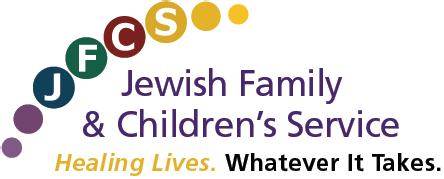

 NICK ENQUIST | STAFF WRITER
NICK ENQUIST | STAFF WRITER




For the first time in its 14 year history, Mt. Sinai Cemetery had help cleaning its monuments. Members of Congregation Or Tzion volunteered their time and labor in preparation for an important religious service the cemetery will host next month.


In what hopes to be the start of an annual tradition, early last Sunday Rabbi Micah Caplan of Congregation Or Tzion arrived with nearly 20 other volunteers at the cemetery’s entrance. He said that he proposed the idea because he believed it was a good mitzvah. He also said that, in his experience, he’s seen many Jewish cemeteries that weren’t as well-kept as they could have been.
He wanted to have his congregation clean a majority of the estimated 1,000 monuments before Mt. Sinai’s Kever Avot Memorial Service, which is when the cemetery provides families with a large service as they visit the graves of their loved ones. More than 300 people are expected to attend this year’s upcoming Kever Avot service.
“We pay respects to our loved ones during this time of the year because we come to them and we ask them for



forgiveness,” Caplan said. “How can we have done better with the lessons that they have left for us to hold onto? One of the things we can do for them is to make their eternal resting places beautiful and to make sure that we begin the new year thinking about them.”

In groups of two, the attending congregants took buckets of water and washcloths and gently and respectfully cleaned each monument. Additional chemicals or abrasives were prohibited and unnecessary for cleaning headstones, according to the grounds superintendent, Ben Wilson, who assisted the congregants with the process.
He explained that there are specialized cleansers for headstones because a normal cleanser will do damage and cause the monuments to lose their shine.
Wilson and his groundskeeping staff clean the monuments once a year before Kever Avot, and work hard daily to preserve the cemetery’s beauty. But he appreciated getting help from community members.
The cemetery’s general manager, Ira Mann, was excited to have Or Tzion’s assistance and he hoped that the cleaning

future where families are healthy, our children are safe, and our elders can live with dignity.Ariel, left, and Hannah Trujillo clean the monument for Gerald and Stephanie Beth Chirnomas. Congregation Or Tzion member Scott Vineberg cleans the headstone for Patricia L. Deikel Ratihn.
would teach the congregants — especially the younger ones — respect for those who have died and the importance of legacy and remembrance.
“It’s an opportunity for them to do a mitzvah as well as learn a little bit,” Mann said. “But at the end, it’s all about showing respect for the deceased. Even though they may not be with us, we’re can still be learning from them. And this is great for them to just be learning small things like how to recognize a Holocaust survivor symbol, or how to recognize a doctor’s symbol.”
For the congregation’s youth director,
more surreal than he anticipated.
“It seems so deep to just be here and be cleaning almost, like, someone’s life and to be doing it for them even though they can’t do anything in return,” Castleman said.
For some of the volunteers, the outing was both a humbling and melancholy experience. Stanley Upiter’s father, Maurice, is buried at Mt. Sinai, so Stanley and his wife, Pam, contribute their time to help clean because they can appreciate the meaning behind the act.


“We thought it would be fitting to pay respects not only to who we have
“HOW CAN WE HAVE DONE BETTER WITH THE LESSONS THAT THEY HAVE LEFT FOR US TO HOLD ON TO? ONE OF THE THINGS WE CAN DO FOR THEM IS TO MAKE THEIR ETERNAL RESTING PLACES BEAUTIFUL AND TO MAKE SURE THAT WE BEGIN THE NEW YEAR THINKING ABOUT THEM.”
RABBIMICAH CAPLAN OF CONGREGATION OR TZION
Terrah Yevilov, it was important to prepare the younger volunteers for what to expect on the day of the cleaning.
“I worked with Rabbi Caplan and we brought him in to do a little educational piece for our teens about what they’re getting themselves into and what does it mean to come and clean at the cemetery,” Yevilov said. “Specifically, why is this important in Judaism and why we hold it in such high regard? I’m excited that they really took it upon themselves to come and be part of this.”
Eight teenagers volunteered to help, including Adam Castleman, a ninth-grader, who admitted that the activity was a little
lost but to the population in general,” Stanley said. “What gets me more than anything else is when you see the ages of some of the people on both ends of the spectrum.”
Stanley added that he thought this was something more people should be doing. Regardless of an individual’s congregation and even regardless of religion, the community should be tending to monuments on a more consistent basis.
“We have others buried in other countries,” Pam said. “And you hope someone is taking care of their memory too. Performing the same mitzvah.” JN

Singles
Meet

 ETHEL G. HOFMAN | JNS.ORG
ETHEL G. HOFMAN | JNS.ORG

Rosh Hashanah falls late on the calendar this year, at the end of the back-to-school month and at the beginning of the first signs of fall. No matter; somehow, there are always those last-minute guests and added recipes that cause a flurry of activity in Jewish households right down to the wire. This year, the holiday starts after sundown on Sept. 29, a Sunday — a gift for those cooks and hosts who have just a few more preparations to make before they welcome the new Jewish year, 5780.
Since summer seems long-gone and families are knee-deep in activities already, make it a little easier on yourself. Make the freezer your friend. With the time ahead of the holiday, whip up a few dishes, slip them into the freezer and forget about them until that Sunday morning. Besides the ubiquitous brisket and chicken, soups and casseroles galore may be cooked, cooled, sealed and frozen. Just don’t forget to label each one, adding key codes such as pareve, meat or dairy.
It’s no big deal to cut up salads the night before (remember, the clocks start to go back, and there will be time after Shabbat for thawing and finalizing the menu). Chunks of tomato, cucumber and shredded basil stay just fine overnight. Toss with a little olive oil, some lemon or lime, and salt and fresh pepper just before serving. Cream soups, however, do not freeze well. The soup will separate, and the texture will become grainy; those are best prepared fresh or make the night before and refrigerate. For thawed soups, the seasonings may need to be adjusted as flavors are reduced by the cold.
And what’s a Jewish holiday without a kugel? My grandkids, home from college, will expect my pineapple applesauce kugel, and for dairy meals, a rich banana dessert kugel. Both freeze exceedingly well. Another musthave on the table is the ubiquitous honey cake. Try a seasonal variation: Pumpkin honey cake, which is moist, dark and delicious.
All of the dishes here may be served at Rosh Hashanah or to break the fast after Yom Kippur.
Serves 6; recipe may be doubled.
Longtime home cook Ophra Kimberg generously shared this recipe with me.
Cook’s tips:
*Cauliflower is the soup thickener.
*Chopped onions are available fresh or frozen.
*Buy canned mushrooms, pieces and stems.
*Cauliflower should be soft before adding to onions and mushrooms.
*When doubling the recipe, freeze in two batches. *For a pareve dish, substitute olive oil for butter.
*For a dairy dish, top with a spoonful of sour cream or plain yogurt.

1 cup cauliflower florets
3 tablespoons butter
½ cup diced onions
1 can (14 oz.), plus 1 (7 oz.) can mushrooms, stems and pieces, drained
2 teaspoons bottled chopped garlic
1 8 teaspoon dried thyme
2 teaspoons pareve bouillon powder
3 cups vegetarian broth
White pepper and salt to taste
Place cauliflower in a microwave-safe dish with 1 to 2 tablespoons water. Cover loosely with plastic wrap. Microwave 4 minutes or until very soft. Drain. Set aside. In a medium saucepan, melt butter over medium heat. Add the cauliflower, onions, mushrooms, garlic, thyme and bouillon powder. Cook over medium heat until onion is transparent. Simmer for 10 minutes, stirring often. Cool slightly before transferring to food processor. Add the broth and process until slightly grainy (longer if a smoother mixture is preferred). Season to taste with white pepper and salt. Cool before pouring into a container. Cover tightly, label and freeze.
Serves 6
Super-easy: Just place all ingredients, except the ginger, in blender and whirl. Serve chilled.
Cook’s tips:
*Use fresh-squeezed lemon juice, not bottled.
*Ginger root, not powdered ginger, should be used.

*May substitute apple juice for orange juice.
*For a dairy soup, stir ½-cup sour cream or plain yogurt into thawed soup.
*If too thick, add a little more orange juice.
1 (15 oz.) can pitted cherries, drained
1 cup whole cranberry sauce
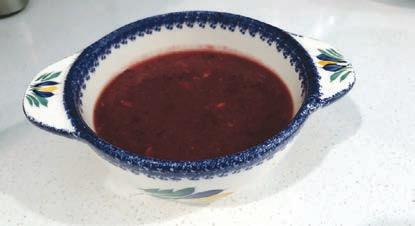
5 tablespoons fresh lemon juice (from 2 large lemons)
1 cup orange juice
½ cup water
1 slice (½-inch thick) challah or white bread, crumbled
2-3 tablespoons coarsely grated ginger root to taste
Place all ingredients, except ginger root in blender jar or food processor. Whirl until smooth. Stir in grated ginger root to taste. Pour into freezer container, cover tightly, label and freeze.
Serves 12
Taste-tingling and hearty. Nobody stops at just one bowl. I stood at the elbow of Mrs. Sonnenschein, my 90-year-old Florida neighbor, as she cooked and stirred.
Cook’s tips:
*Use ready chopped fresh or frozen onions.
*Purchase ready-to-buy, pre-shredded cabbage and shredded carrot.
*Divide soup into two containers. Defrost one for smaller groups.
2 tablespoons vegetable oil
3 cups chopped frozen onions
1 teaspoon salt
3 packages (14 oz. each) shredded cabbage
1 cup shredded carrot
2 tablespoons pareve bouillon granules
1 (46 oz.) can tomato juice
1 (14½ oz.) can Italian-style chopped tomatoes
3-4 bay leaves
Juice of 3 large lemons
½ cup brown sugar, packed or to taste
1 8 teaspoon white pepper or to taste
In large pot, heat vegetable oil over medium heat. Add onions and salt. Cover, reduce heat to low. Cook, stirring occasionally, until onions are golden, about 30 minutes. Add cabbage, carrot and bouillon. Stir, cover and cook 20 minutes longer to soften cabbage. Add remaining ingredients. Partially cover, simmer 30 minutes longer. Adjust seasonings. Cool before pouring into containers to freeze.

Serves 24
Cook’s tips:
*Don’t be intimidated by the long ingredient list or directions. Ingredients are all ready to use.
*May divide ingredients into two containers each that serves 10 to 12.
*Full-fat ricotta, sour cream and milk may be used, if desired.
*Dry thawed chopped spinach by rolling tightly in clean tea towel.
*Reheat, thawed, at 325 degrees, for 40 minutes, or until hot and bubbly.
1 (16 oz.) package skim-milk ricotta cheese
1 (16 oz.) package low-fat sour cream
½ cup skim milk
1¼ teaspoons freshly ground pepper
1 (16 oz.) jar meatless spaghetti sauce
1 (10.5 oz.) “no cook” lasagna noodles
1 (12 oz.) jar roasted sliced red peppers, drained
1 (12 oz.) jar marinated artichoke hearts, drained and quartered
1½ cups frozen chopped spinach, thawed and squeezed dry
2 teaspoons garlic powder
1
3 cup grated Parmesan cheese
¾ cup water
Preheat oven to 375 degrees. Spray a 13×9 inch lasagna pan with nonstick vegetable spray. In a bowl, mix the ricotta cheese, sour cream, skim milk and pepper. Set aside. Spread half the spaghetti sauce over the bottom of prepared pan. Cover with 3 lasagna noodles and top with about 1/3 cheese mixture. Cover with roasted pepper
SEE FLAVORS, PAGE 18
wishes a happy and healthy new year to all of our partners and fellows in your community
Anthem , AZ www.nvjca.org
Wishing
From the Jewish Community Relations Council


CONTINUED FROM PAGE 17
and half the artichokes. Repeat with 3 lasagna noodles and half the remaining cheese mixture. Cover with remaining artichokes and the spinach. Top with remaining cheese mixture. Sprinkle with garlic powder and Parmesan cheese. Pour ¾ cup water into one corner of pan, tilting to distribute water to other corners. Cover tightly to seal with heavy-duty foil. Bake in preheated oven for 1 hour. Uncover and bake 15 minutes longer. Cool completely before sealing with foil. Label and freeze.
FROZEN VANILLA-CHOCOLATE SOUFFLÉ (DAIRY)
Serves 8-10
Cook’s Tips:
*May substitute whipped topping for whipped cream.
1½ pints frozen vanilla yogurt, softened
¼ cup miniature chocolate chips
2 tablespoons sherry
1¼ cups stiffly whipped cream
1 cup ripe strawberries, hulled and sliced
2 tablespoons honey

www.jcrcphoenix.org
jcrcphoenix JCRC_Phoenix
Spray a 6-cup mold or bowl with nonstick vegetable spray. Set aside. In a medium bowl, mix yogurt, chocolate chips and sherry. Fold in the whipped cream. Spoon into a prepared mold or bowl. Cover with plastic wrap. Freeze 6 hours or overnight. To serve: Place berries in a small microwave bowl. Stir in honey. Microwave for 1½ minutes on High. Mash with a fork. Place in refrigerator to cool. Unmold frozen soufflé onto a platter and spoon berry mixture over top. Serve immediately.
RICH BANANA DESSERT KUGEL (DAIRY)
Serves 8-10
Cook’s tips:
*Leave butter and cream cheese at room temperature for several hours to soften. *May use overripe bananas.
About half an 8-oz. package of fine egg noodles, cooked and drained
2 bananas, thinly sliced
1 stick (4 oz.) unsalted butter, softened
4 oz. cream cheese, softened
½ cup sugar
3 large eggs
1 cup sour cream
1 teaspoon vanilla extract
1-2 teaspoons cinnamon-sugar
Preheat oven to 350 degrees. Spray a 9-inch square baking dish with nonstick vegetable spray. Spread cooked noodles over bottom of baking dish. Spread bananas over to cover. Set aside. In a large bowl, whip the butter, cream cheese and sugar until pale and fluffy, about 1 to 2 minutes. Beat in eggs, sour cream and vanilla. Pour over bananas. Sprinkle with cinnamon-sugar. Bake in preheated oven 50 minutes or until almost firm to touch in center. Cool completely before sealing with aluminum foil, labeling and popping into freezer.

Serves 8-10
Cook’s tips:
*Recipe may be doubled using a large baking dish. *May use a pareve granola topping instead of crushed cornflakes.
*Substitute canned pineapple for fresh.
½ pound medium egg noodles, cooked and drained
5 eggs
¼ cup vegetable oil
2 cups chopped fresh pineapple

1 (16-oz. jar) chunky applesauce

¾ cup sugar
1½ teaspoons cinnamon, divided
1 3 cup crushed cornflakes
Preheat oven to 375 degrees. Spray a 9×12-inch baking dish with nonstick vegetable spray. In a large bowl, whisk eggs with oil, pineapple, applesauce, sugar and 1 teaspoon cinnamon. Add the slightly cooled noodles. Stir to mix. Transfer to
prepared baking dish. Sprinkle cornflakes evenly over noodle mixture. Sprinkle with remaining cinnamon. Bake in preheated oven 45 minutes or until slightly moist in center. Cool, cover tightly with foil and freeze.
PUMPKIN HONEY CAKE (PAREVE)

Makes 1 loaf (9x5x3-inch dish) and 1 extra mini-loaf (not individual, but mini-size), or 4 mini-loaves.
Cook’s tips:
*Substitute 2 teaspoons cinnamon and 1 teaspoon nutmeg for pumpkin-pie spice.
*Substitute ¾ cup candied citron peel instead of raisins.
*For full-proof nonstick effect, line bottom of loaf pan with waxed paper and spray with nonstick vegetable spray.
4 eggs
1 cup dark-brown sugar
½ cup water
1 cup vegetable oil
1 cup canned pumpkin (not pumpkin-pie) mix
¾ cup molasses
½ cup honey, warmed
2 cups whole-wheat flour
1 cup all-purpose flour
2 teaspoons baking soda
1 tablespoon pumpkin-pie spice
1¼ cups dark or golden raisins
Preheat oven to 350 degrees. Spray loaf pan and extra mini-loaf pan (or 4 mini-loaf pans) with nonstick vegetable spray with flour. Beat eggs and sugar until blended. Add the water, vegetable oil, pumpkin, molasses and honey. Mix well. Stir in the flours, about ½ cup at a time, mixing to blend between each addition. Stir in the baking soda, spice and 1 cup raisins. Spoon into prepared pan(s). Scatter remaining raisins on top. Bake in preheated oven for 50 to 60 minutes or until a toothpick inserted in center comes out clean. Bake mini-loaves 45 minutes or until toothpick comes out clean when inserted in center. Cool in pan 10 minutes. Loosen edges by running a round bladed knife around. Turn out onto a wire tray. Cool completely. Wrap and freeze.
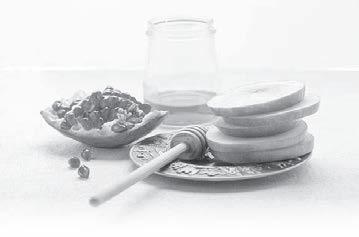














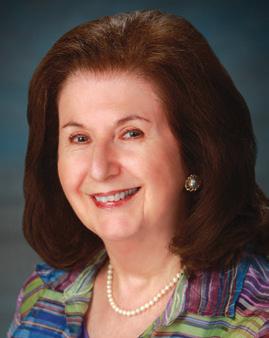



These days, when a Jew gets married, it’s likely to be to a non-Jewish partner. The Pew study of 2013 found that, in the years since 2000, the majority of non-Orthodox Jews — 72% — married someone who follows another religious tradition — or none at all.
When a Jew marries a Christian — or a Muslim, Hindu, Buddhist or Zoroastrian — there’s no guide to follow. And many of the necessary rituals may be unfamiliar to the other partner.
Such weddings aren’t trying to do the traditions “right,” says Rabbi Deborah Reichmann, of Potomac, Maryland, who officiates interfaith weddings. The actions aren’t seen as a literal connection to the deity.
“Weddings are all metaphor anyway,” Reichmann says. “The couple is basically professing their love and fidelity, and there are different ways of doing that.”
“For a lot of people who are really in love, their love upends religion,” says Rabbi Annie Bornstein, another Washington-area interfaith officiant. “For others, religion is not a major issue in their love.”
Four interfaith couples spoke to us about their weddings, how they tackled the planning and the challenges they faced.
Trevor Smith, 28, and his fiancée, Shir Kaplan, 25, are planning a wedding for May 2020. Smith is Christian, Kaplan is Jewish. They’re just beginning to plan.
“The interesting part about being an interfaith couple is what our faiths mean to us,” Smith says. “Both of our faiths are very important to us. We’ve had a very open conversation about what important traditions we want. We see our wedding as an opportunity to experience this other faith [and] do it right.”
(Kaplan was studying for the MCATs at the time of the interview and unavailable to talk.)
They’re firm on a few things, Smith says. They want two officiants, a Jew and a Christian. They want a ketubah (a Jewish marriage agreement) a chuppah (Jewish marriage canopy) and a glass to break at the end of the ceremony. They also want to perform the Christian custom of washing each other’s feet.
According to Smith, Kaplan’s family is from Israel and their diet is kosher-style. He says he’s learned a lot from his relationship with the Kaplans.
“The Jewish identity is much more complex than I originally thought,” he says. “It’s not
just a faith matter. It’s a cultural matter, an ancestry matter and very ingrained in multiple aspects of her life. But in terms of wedding planning, it’s been eye opening.”
It becomes more complicated if a Jew is engaged to someone who isn’t Christian. They might struggle to find officiants or turn up a search of other couples who have led the way.
“We couldn’t find anything like our wedding,” says Jonathan Tahan, a Jew whose wife, Ashwinnie, is Hindu. “We had no starting point.”
Tahan says while they had no trouble finding a Hindu priest willing to co-officiate the wedding (the priest was a relative of Ashwinnie’s) they did have trouble finding a Jewish officiant. Then they struggled to figure out how to combine the traditions in a way that was satisfactory to both officiants and families.
“After that, we got a plan of how we were going to mix our traditions,” Tahan says. “We wanted [the officiants] to legitimize [what we wanted to do]. It was a new endeavor for all four of us.”
What they ended up doing was switching back and forth between the Hindu ceremony and the Jewish one. It all lasted about 1 ½ hours.
“There’s a lot in a Hindu wedding, we had to cut some out to make it shorter,” Tahan says. “[The officiants] knew that this would be a little risky and we got confirmation and acceptance from them.”
The hardest part was breaking the glass. The couple in Hindu weddings goes shoeless. To protect Tahan’s bare foot, the glass was wrapped in extra layers of napkins. Tahan was still nervous about cutting his foot, though it worked out in the end.
Another Jewish-Hindu couple, Alyson Kelly and Rahul Srivastava, found a different solution to breaking the glass. At that point in the ceremony, they left the platform and put on their shoes.

After Srivastava broke the glass, the bridesmaids acted out a Hindu tradition of stealing his shoes.
Kelly said they benefitted from working with a Hindu priest who had performed an interfaith wedding with a rabbi.
“We had a script that we were basing it on, and we went from there. [There was] some
kind of jumping in between,” Kelly said, add ing she was happy to have somebody who knew what he was doing.
They had a chuppah that doubled as a Hindu wedding canopy, or mandap; danced the and were lifted on chairs. But they decided not to have a ketubah because Kelly’s parents didn’t have one at their wedding.

During the Hindu ceremony, Srivastava danced his way to Kelly. There was a fire cer emony where offerings were made and where the couple danced around the blaze. And Srivastava applied red powder to Kelly’s hair to symbolize her new status as a married woman.
Michael Tuteur and Maryam Nezamzadeh wanted their Jewish-Muslim wedding to balance the two religions as perfectly as possible. Tuteur, who is Jewish, says that Nezamzadeh had planned the entire wedding so that nothing would be left out.
“We were deliberate. We had to be,” he says. “We didn’t want people to think we were lopsided or imbalanced. I think that just starts with understanding. It requires constant thought. And that will be true for the rest of our lives.”
Bringing their traditions together was about honoring their respective heritages as well as their families. And this wasn’t a simple task, Tuteur says. They struggled to find officiants who wouldn’t put strict conditions on their wedding or who would perform it at all.
In the end, they worked with Bornstein and a Muslim friend of a friend who was willing to perform the ceremony. They had two weddings that day. First came a full PersianMuslim ceremony, which included a sofreh, a table laid with multiple objects each with its own meaning. Once the wedding was finished, the couple turned in the opposite direction, stepped under a chuppah and underwent a full Jewish wedding.
Tuteur says the importance to them was performing each ceremony in full and recognizing the importance of each ritual and object.
“Ultimately, the last step was breaking the
glass, which to me is a reminder that support is fragile,” Tuteur says.
And though they tried to honor their Jewish and Muslim heritages at their wedding, the couple say they are more interested in creating their own traditions and holidays, rather than figuring out how to combine two different traditions.
“For us, there might be holidays, but we [also] celebrate our own holidays by, for example, going back to a restaurant where something important happened,” Tuteur says.
Tuteur and Nezamzadeh participated in two complete weddings, either of which another couple would have been married at the end. When did Tuteur and Nezamzadeh consider themselves married?
“‘Love’ to us is short for ‘all-of’ the support, Tuteur says. “So, we considered ourselves married only after both certificates [the ketubah and nikaah] were signed and both ceremonies were complete. All-of the steps had to be completed.
For all four couples involved in this article, religion was important to consider in planning their ceremony, but second in consideration to their love.
“There’s no stopping them anyway,” Bornstein said. “These couples are going to bring the best of what each has to offer.” JN
Are diamonds truly timeless, or are the expensive gems finally on the way out? What about gems that aren’t diamonds? For so long it was taboo to use any other kind of jewel, but does that still hold true? Just as wedding ceremonies are being modernized with updates to old traditions, so too are engagement rings. Are rings even still round, or has a new shape ridden into town? To get some clarity, we spoke to two local experts about emerging and consistent trends in the Valley’s engagement ring industry.

“The most popular metals are platinum, yellow gold and white gold,” said Glenna Gibbons, president of G.G. Gems Inc. in Scottsdale.


Marc Shutro, vice president of Burland Jewelry Center, Inc. in Phoenix, agreed that white gold has remained firmly popular with women.


“For men,” Shutro added, “definitely tungsten carbide bands. They’re scratchproof, but can’t be sized.”
Tungsten carbide is an alloy of tungsten and carbon; it’s the most scratchresistant metal known to man, and will not bend out of shape.
As for other ring trends, Gibbons noted that “rose gold is definitely becoming more popular in engagement rings, especially in the abstract designs.”
“Round diamonds are always a classic and a popular cut followed by ovals and cushion cut diamonds,” Gibbons said.

Shutro added that “round brilliant is always the most popular” cut, while “oval would be second.”




A round brilliant is a many-faceted cut where the gem is made into the shape of a cone.
For designs, Gibbons thinks that multiple gem-shapes in one ring are trending right now.
“A beautiful and creative trend are abstract styles using different cuts (shapes) of diamonds together and sometimes adding colored gemstones,” Gibbons said.
Shutro has also noticed popularity in an unexpected design-trend. Burland has seen “stackable bands in different colors and thin, diamond bands stacked on top each other to make one widelooking band.”
Shutro also noticed that yellow gold is currently making a comeback. Gibbons agreed, adding “Yellow gold is definitely becoming more popular now.” But according to Shutro, it’s not yet the most popular. “White gold is still about 80% of our gold sales.”
In terms of gemstones, Gibbons said that diamonds are still used the most for engagement rings, though “about one in 20 people may ask for a colored gemstone such as a blue sapphire.”

“Diamonds are still the most popular,” Shutro said. “But people are using diamond replacements, such as moissanite and lab-grown diamonds, to cut the cost.” JN

hen Judy Stern got married, she limited the guest list to adults. Children, she believed, might ruin her special day.
“At the time I got married, my only experience with babies was when I babysat,” said Stern, a resident of Silver Spring, Maryland. “Those babies were constantly crying.”
She regrets her decision now. Having her own children shed a new light on the demands she made on her wedding guests who were parents, and what her wedding might have lost in the process.
“After I had children of my own, I realized how hard it was to leave them, and that they were quiet and happy as long as I was with them. I now think having well-behaved children at a wedding adds to the joy,” she said. With so much riding on the wedding to
be a beautiful, joyful, meaningful, “perfect” day, adding children to the mix might seem guaranteed to take the focus off of the bride, the groom and their happiness.
For those who do invite children, there are ways to accommodate their energy and attention spans, according to wedding planner Donna Lawrence.
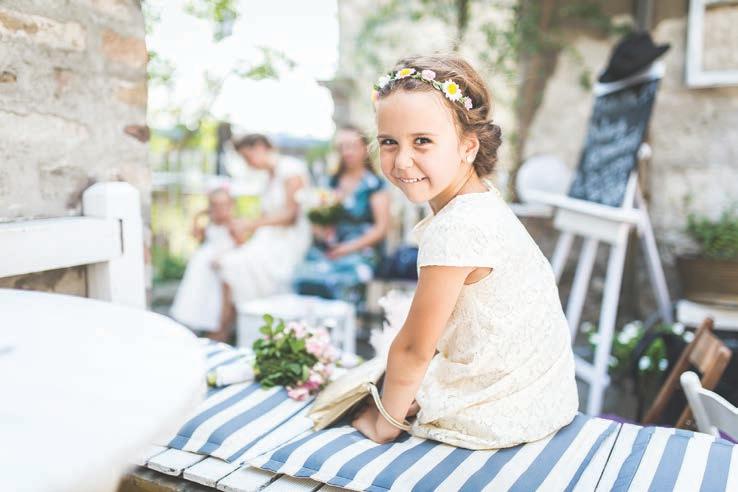
“I strongly encourage hosts to provide sitters for their young guests to allow their parents to participate fully in the wedding,” she said.
And that’s what Stern did when her own children got married. She hired teenagers to babysit.
“We used separate rooms in the hotel and shul for the children and babysitters, and the parents — as well as the bride, groom and


“It is definitely not uncommon for couples to have a no-children policy at a wedding,” said Lawrence. “Exceptions are made for babies and nursing mothers. It shouldn’t be the responsibility of the couple to allow children to attend if the parents can’t find a sitter. They also shouldn’t worry about offending anyone with this policy.”
Sometimes it’s the situation that determines whether children participate. Maharat Ruth Balinsky Friedman was 9 when her widowed father remarried. She and her younger sister walked down the aisle, but were absent from the reception. “Our father didn’t believe in children at weddings,” said Friedman.
At her own wedding, babies accompanying out-of-town guests were welcome. “If a woman was coming from out of town with a baby, it was clearly a big step for her to come, and she probably was bringing her baby because her baby needed to nurse,” Friedman explained.
“We did have a babysitter during the chuppah, so those mothers could actually be there, and we didn’t want babies crying.”
If you do include kids, here are some tips to keep them entertained and well behaved.
1. Let them eat treats
If your little wedding party attendants act up, they might be just hungry. Keep them cheerful with something sweet.
2. Keep ’em busy
Offer tabletop entertainment during a long dinner, with cups of crayons (or any other non-staining drawing materials). For younger kids, turn one area into an arts and crafts space.
If kids are in a separate room, try a kidfriendly DVD, board games, Game Boys or a child-friendly playlist. You can rent or borrow ping-pong or air hockey tables. For a more relaxed outdoor wedding, set up lawn games and activities like a three-legged race.
If your budget allows, hire a professional caricature artist, fortune teller, clown, storyteller, magician or impersonator.
4. Stagger the meals and/or serve kids fare
Consider dividing dinner in two — first kids, then adults. While you and your guests may enjoy lingering over a five-course meal, most kids are ready to call it quits after 15 minutes. Be thoughtful about choices. Most kids will eat only fun foods like little pizzas, chicken fingers or mini hot dogs. For dessert, a make-your-own-sundae bar is a hit.
5. Don’t forget naptime
Very young children will probably be asleep before the event’s over, but you may also have tired older kids. Set up a quiet room where they can rest after a long, exhausting day (or night).
6. Be clear about who’s invited — and stay firm
Parents tend to make assumptions, so make clear who’s included. To avoid hurt feelings, if you’re having some kids (such as the flower girl) and not others, explain the parameters. If you back off on one person, someone else will expect the same. Try saying: I want you to enjoy yourself; leave the kids at home. Or: I have budget or space limitations.
7. For kids in the ceremony
Young children sometimes get scared and bolt. If a parent, grandparent or familiar caregiver is waiting at the end of the aisle, the child is much more likely to walk all the way down.
8. Keep a sense of humor
If your toddler can’t keep her hands off the wedding cake, don’t throw a fit. Instead, laugh and tell the photographer to catch it on film. JN
Having a non-clergy friend or family member officiate your wedding is not just a trend, but has been fully accepted as an aspect that comes with planning a wedding.
In 2015, according to one study, 40% of weddings were officiated by a friend or relative. In a “if you can’t beat them, join them” move, Sixth & I Historic Synagogue in Washington, D.C., offered a “What It Takes: How to Officiate Your Friend’s Wedding” class taught by Rabbi Shira Stutman.
The group of about 20 were mostly officiants and a few couples. Most were interfaith weddings with one Jewish partner, a few were fully Jewish and there were even a couple completely non-Jewish weddings represented.
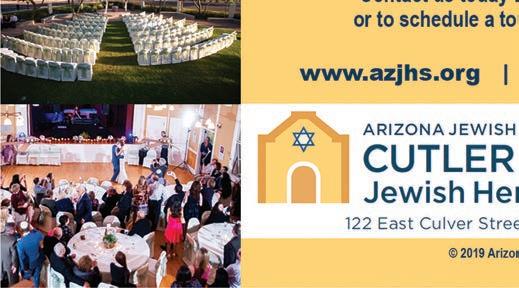


Stutman ran through what a traditional Jewish wedding would look like and offered up other versions of doing certain rituals depending on what sort of ceremony the couple wants.
“When [the non-clergy officiant trend] first started, I was deeply offended,” Stutman says. “I can’t watch three episodes of ‘ER’ and do surgery.” But she came around when she heard from couples how meaningful it was for them.
It was that way for Ari Bassin, who had a friend officiate his wedding and has been asked to officiate another friend’s wedding.
“The person who officiated my wedding played such a big role in making is special,” he says. “And I want to pass that forward.”
Mitchell Eilenberg and Gabrielle Schechter, the only couple in attendance with both partners, are having Eilenberg’s dad officiate their wedding. This class was a way for them to figure out how they wanted the ceremony to go.
“My parents are egalitarian Conservative, but traditional, and so they have one frame of reference,” Eilenberg says. “And we wanted our own frame of reference.”
So, for those who have been recruited as officiants — or those considering a friend or relative as officiant — here are seven tips and tricks from Rabbi Shira Stutman.
1. Be the calm in the storm
“Just be a non-anxious presence,” she says.
The wedding day will be stressful no matter what for the couple, so the more calm the officiant can be, the smoother everything will go.
2. Reflect the couple and their personality


Sometimes it is up to the officiant to talk couples through questions about what
their ideal ceremony looks like. Even if their thoughts are the opposite of what your preference may be, Stutman adds, always keep in mind it’s their wedding, not yours.
Often, officiants are a friend or relative of one half of the couple, meaning they know that person better. It’s the officiant’s job to ensure he or she is giving equal time in their remarks to each half of the couple. Stutman says she has each partner write her a letter about what each loves about the other for her basis.
3. Think about logistics
Officiants should double-check their necessary materials — the two Kiddush cups, ketubah, rings, kosher wine and so on.
A few extra logistical tips: Have tissues on hand, definitely use a microphone if you want anyone to be able to hear and use kosher white wine so it won’t stain.
4. Practice
Stutman absolutely recommends running through everything beforehand.
And it doesn’t just hold true for the officiant: “You should tell the couple to practice their kiss,” she says. If the couple isn’t on the same page — one leans in for a peck while the other goes for something a little deeper — then it’s awkward for everyone.
5. Don’t speak Hebrew unless you know Hebrew
Let a Jewish family member or friend do the Hebrew readings or blessings. It’s really uncomfortable for the Jewish family and friends otherwise, she says, to listen to a non-Jew stumble through Hebrew.
6. Don’t cry
Stutman cried while officiating her brother’s wedding and still regrets it. It was fine, she says, and generally no one cares, but it’s likely you’ll feel better about it if you don’t.
7. Keep it short
“At the beginning, I was like the guy from [the movie] ‘Princess Bride’ — ‘Mawwiage…,’ you know?” Stutman says. “I had a lot to pontificate about. But I’ve realized the longer I’ve been married, the less I know. Now, I don’t pontificate.”
Besides, she adds, by the time the officiant’s remarks roll around, the gathered family and friends will have already heard a lot from you.
“Anything you can say in 15 minutes, you can say in 10 minutes. Shorter is better.” JN

SUNDAY, OCT. 6
BJE’s Jewish Marriage University: 9:30 a.m.-12:30 p.m., Valley of the Sun JCC, classroom 101, 12701 N. Scottsdale Road, Scottsdale. Learn ways to enhance one’s relationship including communication and conflict resolution skills, planning for one’s financial future, how Judaism can help build strong relationships and marriages, along with many other topics. $45 per couple. Register at bjephoenix.org. Email Linda Feldman at lindaf@bjephoenix.org for more information.
SATURDAY, OCT. 19
Walk For Freedom: 8 a.m.-noon, Hillsong Phoenix Downtown Campus, 402 W. Monroe St., Phoenix. There are currently around 40 million people enslaved by human trafficking. WFF believes that every step taken locally leaves footprints globally. Join or help spread the word for Walk For Freedom. Free. Contact ramiah.jackson@ hillsong.com for more information.
SATURDAY, OCT. 26
Maricopa Music Fest, LLC: 1-7 p.m., The Copper Sky Recreation Multigenerational Center, 44345 M.L.K. Jr. Blvd., Maricopa. Partnered in part by: Amazon, Honda and Little Caesars Pizza. The public will be able enjoy a free Motown Impersonation Show, compete in a lip sync contest, play laser tag, game trucks and corn tossing with a half-time skateboard competition. Maricopa Mayor Christian Price will take the stage to receive scholarship funds from Amazon and more. Visit maricopamusicfest.us/battle-ofthe-bands-info?olsPage=products for more information.
MONDAYS
Mahjong Mondays: 10 a.m.-12:30 p.m., East Valley JCC, 908 N. Alma School Road, Chandler. Every Monday, except on Jewish or legal holidays. You are invited to come and play, no RSVP is necessary, just come. This free program is intended for players with prior experience. Be sure to bring your current mahjong card and a set if you have one. evjcc.org or 480-897-0588
WEDNESDAYS
‘The Valley News’: 10-11:30 a.m., Valley of the Sun JCC, 12701 N. Scottsdale Road,
Scottsdale. The class focuses on current events and is led by Dr. Michael Epner. No registration required.
THIRD SUNDAY OF EVERY MONTH
Jewish War Veterans: 10 a.m., Arizona State Veterans Home, 4141 N. S. Herrera Way, Phoenix. Scottsdale Post 210 welcomes all Jewish veterans to its monthly meetings. Due to Sukkot the October meeting will be on the 27th. Refreshments served at 9:30 a.m. Call 602-256-0658 for more information.
MONDAY, SEPT. 30
Duet Volunteer Orientation: 5-7: p.m., Orangewood Presbyterian Church, 7321 N. 10th St., Phoenix. Orientation for volunteers to provide services to homebound adults. Bring driver’s license for ID. A Level 1 Fingerprint clearance is required to volunteer. Instructions and information for obtaining this will be provided at orientation. Cost is $73, which can be reimbursed by Duet after six months of active volunteering. RSVP at 602-274-5022.
WEDNESDAY, OCT. 2
Mahjong Mondays: 10 a.m.-12:30 p.m., East Valley JCC, 908 N. Alma School Road, Chandler. Held Wednesday, Oct. 2 due to Rosh Hashanah. You are invited to come and play, no RSVP is necessary, just come. This free program is intended for players with prior experience. Be sure to bring your current mahjong card and a set if you have one. evjcc.org or 480-897-0588
THURSDAY, OCT. 3
Open Beit Midrash class: 9 a.m., East Valley JCC, 908 N. Alma School Road, Chandler. The Life and Tragedy of King David, taught by Rabbi Michael Beyo. Free, but registration required: evjcc.org/open-beit-midrash
Talmudic Heroes: 10 a.m., East Valley JCC, 908 N. Alma School Road, Chandler. Taught by Rabbi Michael Beyo. Topic: Beruya. Cost: $14. Registration required: evjcc.org/ open-beit-midrash
Walking Through History: 11 a.m., East Valley JCC, 908 N. Alma School Road, Speaker: Rabbi Michael Beyo, EVJCC CEO. Topic: Sephardic Jewish History: Yehuda Ha-Levi. Cost: $14, includes kosher lunch. Registration required: evjcc.org/ open-beit-midrash

SUNDAY, OCT. 6
Ladles of Love: 9 a.m.-noon, East Valley JCC, 908 N. Alma School Road, Chandler. Volunteers cook and deliver meals. Register: evjcc.org/ladles-of-love
Valley Jewish Singles Ages 50+ brunch: Noon, Chompies PV Mall, 4550-324 E. Cactus Road, Phoenix. Reservations required; email valleyjewishsingles@cox.net to RSVP.
SUNDAY, OCT. 13
Yoga to Awaken Inner Joy: 11:35 a.m.1:25 p.m., Valley of the Sun JCC, 12701 N. Scottsdale Road, Scottsdale. An all-levels yoga workshop also occurring on Nov. 17. Instructor: Amy Tyre. This workshop is for anyone who wants to feel more joy, hope, energy and happiness. It is specifically designed to help alleviate the symptoms of stress-related disorders, including anxiety and depression. Participants may attend one workshop or select both dates. Childcare is available. $25 for members, $33 for guests. Contact the JCC at 480-481-7018 or healthandfitness@vosjcc.org to register.
WEDNESDAY, OCT. 16
Duet presents: ‘Finding Meaning and Hope’ video discussion series: 10 a.m.-2:30 p.m., Duet (Mariposa Room) 10000 N. 31st Ave., Suite D200, Phoenix.
Professionals and caregivers are invited to become trained facilitators of Duet’s new series. This video series is a structured, peer-led group discussion for caregivers experiencing ambiguous loss. Based on the groundbreaking book, “Loving Someone Who Has Dementia: How to Find Hope While Coping with Stress and Grief,” by Pauline Boss, Ph.D., this video series occupies a unique place in the caregiving landscape. It equips caregivers with the tools to lower stress, build resilience and stay healthy. Attendees of this volunteer training will be taught how to facilitate this series to caregivers within the community. Free, lunch included. Contact richards@ duetaz.org or call 602-274-5022 etx. 141 for more information.
WEDNESDAY, OCT. 23
BJE’s Jewish Marriage University: 6:308:30 p.m., Valley of the Sun JCC, 12701 N. Scottsdale Road, Scottsdale. Extra session for interfaith couples. Learn ways to enhance one’s relationship including communication and conflict resolution skills, planning for one’s financial future, how Judaism can help build strong relationships and marriages, along with many other topics. $45 per couple. Register at bjephoenix.org. Email Linda Feldman at lindaf@bjephoenix.org for more information.

THURSDAY, OCT. 24
Child Sacrifice: Considering the Context: 1-2 p.m., Beth Emeth Congregation of the West Valley, 13702 W. Meeker Blvd., Sun City West. Speaker: Professor Ziony Zevit. Suggested donation: $18. Register at VBMTorah.org.
Letters from the Dead: Three Ancient Texts Discovered by Archaeologists : 7-8:30 p.m., Temple Chai, 4645 E. Marilyn Road, Phoenix. Speaker: Professor Ziony Zevit. Suggested donation: $18. Register at VBMTorah.org.
CALENDAR
SUNDAY, OCT. 27
The Hammerman Family Lecture –Almighty? No Way! Embracing the God We Actually Love: 5-6:30 p.m., Congregation Or Tzion, 16415 N. 90th St., Scottsdale. Speaker: Rabbi Dr. Bradley Shavit Artson. Suggested donation: $18. Register at VBMTorah.org.

MONDAY, OCT. 28
Cactus ORT: 7 p.m., Mountain Gate Apartments Clubhouse, 4602 E. Paradise Village Parkway N., Phoenix. Paul Rockower, executive director of the Jewish Community Relations Council, will discuss Jewish communal public diplomacy. Prospective members, current members and the public are welcome to attend this free event. Refreshments provided. To RSVP or for more information, call Ellen at 602-953-9302.
Family
MONDAYS
Free baby gym classes: 9:30-10 a.m., Arizona Sunrays Gymnastics & Dance Center, 15801 N. 32nd St., Phoenix. Parents (and grandparents) are invited to bring in their babies, ages 6 months to 18 months. This parent-child class uses tumbling mats, balance beams, parallel bars and trampolines. Work on strength, balancing and coordination with your baby. This is a “drop in” class. Advanced registration is not required. Call 602-992-5790 or visit arizonasunrays.com for more information.
Breakfast Babies: 9-10:30 a.m., The Brunch Café, 15507 N. Scottsdale Road, Suite 100, Scottsdale. A fun-filled morning gathering for parents and grandparents with babies or toddlers. Complimentary coffee and a chocolate-covered strawberry with the purchase of any meal. Includes a story time picture book reading. Call 480-398-7174 or visit brunchcafe.com for more information.
WEDNESDAYS
Free baby dance classes: 9:15-9:45 a.m., Arizona Sunrays Gymnastics & Dance Center, 15801 N. 32nd Street, Phoenix. For babies who are walking up to age 2 ½. This baby dance class is a fun introduction to music, movement and dancing. Babies will dance to the music while using all kinds of different props and toys. Parent/ grandparent participation is required. This is a “drop in” class. Advanced registration is not required. Call 602-992-5790 or visit arizonasunrays.com for more information.
FIRST SATURDAY OF EACH MONTH
Kavana Café: 8:45 a.m., Congregation Or Tzion, 16415 N. 90th St., Scottsdale. This is an informal opportunity to learn with Rabbi Micah Caplan prior to Saturday-morning services. A light breakfast will be served. For more information, visit congregationortzion. org or call 480-342-8858.
Torah Express: Noon, Congregation

Or Tzion, 16415 N. 90th St., Scottsdale. On Shabbat mornings, during the congregation’s Kiddush lunch, join Rabbi Micah Caplan and other Jewish professionals and teachers from the community for an in-depth study of the Torah portion of the week. No RSVP required. For more information, visit congregationortzion.org or call 480-342-8858.
THURSDAY, OCT. 3
Memory Café: 10-11:30 a.m., Beth El Congregation, 1118 W. Glendale Ave., Phoenix. Jewish Family and Children’s Service hosts a monthly Memory Café event, which will include refreshments along with stimulating, interactive programming geared toward those who have memory loss and their care partners. Musician and vocalist Joe Bousard is this month’s special guest artist. For more information or to confirm times, please contact Kathy Rood at 602-452-4627 or via email at kathy.rood@ jfcsaz.org.
THURSDAY, OCT. 17
The Palazzo grand opening: 4:30-8:30 p.m., 6250 N. 19th Ave., Phoenix. The Palazzo senior living community celebrates its grand opening with a cruise-ship themed event. Enjoy worldly destinations throughout the grounds and enter for a chance to win a cruise or other prizes.

SUNDAY, OCT. 6
Israeli Movie Series: 3 p.m., East Valley JCC, 908 N. Alma School Road, Chandler. “Song of Ascension,” a documentary about the relationship between a couple and the surrogate who has their baby. A $5 donation suggested. Register: evjcc.org/movie-series
SUNDAY, OCT. 27
‘Robbery of the Heart’: 2-3:30 p.m., Civic Center Library, 3839 N. Drinkwater Blvd., Scottsdale. This documentary delves into the story of Kristallnacht from the point of view of Holocaust survivors and German citizens. Q&A with producer Micah Brandt and Rabbi Micah Caplan following the film. Contact Pat Toftoy at ptoftoy@ scottsdaleaz.gov or 480-312-2180 for more information.
WEDNESDAY, OCT. 30
‘Robbery of the Heart’: 5:30-7 p.m., Civic Center Library, 3839 N. Drinkwater Blvd., Scottsdale. This documentary delves into the story of Kristallnacht from the point of view of Holocaust survivors and German citizens. Q&A with producer Micah Brandt following the film. Contact Pat Toftoy at ptoftoy@scottsdaleaz.gov or 480-312-2180 for more information. JN
Andrew S. Borans, CEO of the Alpha Epsilon Pi Foundation, welcomes more than 150 members and their friends and family to the Phoenix Celebration Gala to honor Jerry Harris (Arizona State University graduate, 1960) and Jay Spector (Northern Arizona University graduate, 1996) for their commitment to AEPi International with the Centennial Leadership Awards. AEPi was founded in 1913 and is an international Jewish fraternity dedicated to developing leadership for the global Jewish community.

An Arizona State University student writes down a pledge for Chabad at ASU’s annual 9/11 Mitzvah Marathon on Wednesday, Sept. 11


Students from North Pointe Preparatory, a public charter school in Phoenix, visited the Arizona Jewish Historical Society on Sept. 16 to learn from about the Holocaust. Students also interacted with Holocaust artist Robert Sutz, center, and met Holocaust survivor Oskar Knoblauch.

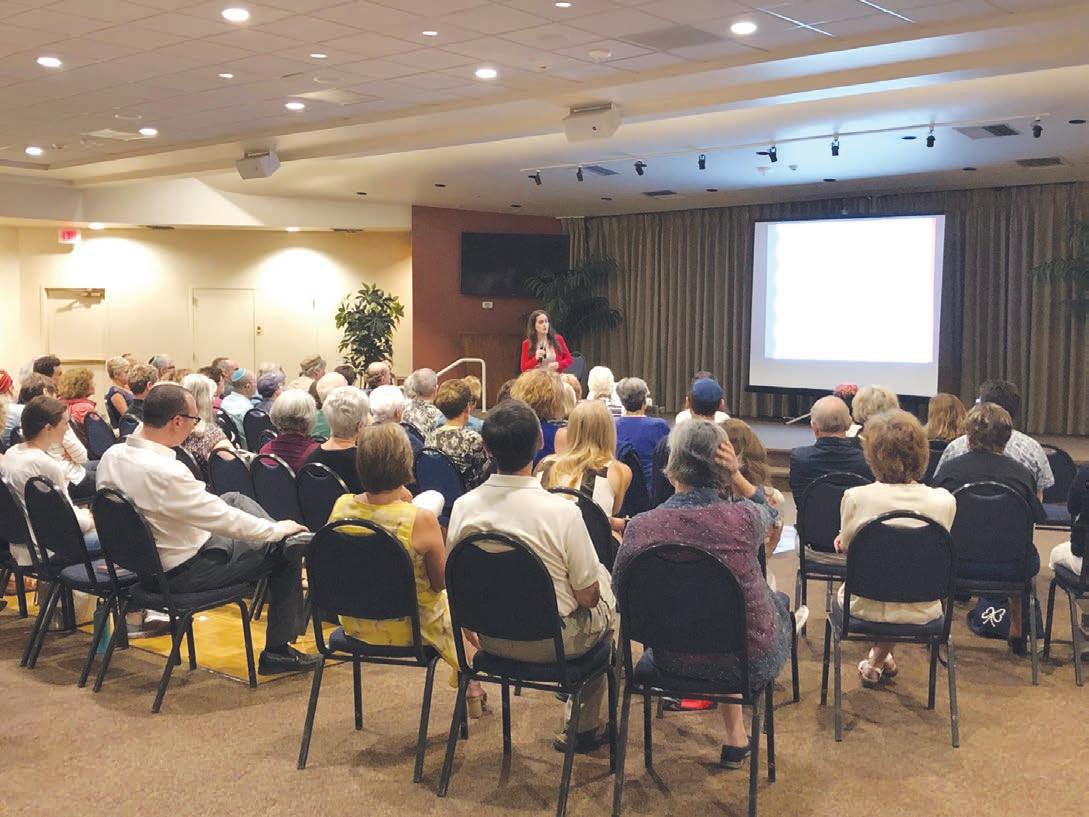
Max Drachler becomes a bar mitzvah on Oct. 26, 2019, at Congregation Beth Israel. He is the son of Laura Drachler of Phoenix and John Henderson of Las Vegas, Nevada.

Grandparents are Carole and David Drachler of Phoenix.
For his mitzvah project, Max volunteered with Camp Swift Foundation. He helped transition supplies from the summer overnight camp to the year-round programming.
A student at Explorer Middle School, he enjoys track and field and swimming and loves Camp Stein.
Jordan Ziprin, 88, died Aug. 29, 2019.
Jordan Ziprin, son of Nathan and Sheba, came from a golden chain of rabbis and reformers. He survived the Lower East Side and grew up in the illuminated shadow of his beloved brother, Lionel, who wrote fantastical poems and was on a lifelong mission to save the recordings of Sephardic songs by their grandfather, Rabbi Naftali Zvi Margolies. Because of his health, my father had reason to flee New York and his family and attended the University of Arizona. This was a wonderful time in his life. He studied English literature, joined the ROTC, made great friends, strolled down Congress Street looking like James Dean and somehow wooed my gorgeous mother, Natalie Boxer, to Tucson, married her in a rose garden and never let her go.
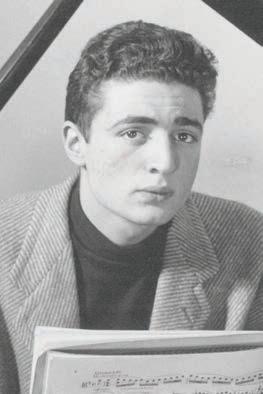
Ryan Rey Raskin becomes a bat mitzvah on Oct. 12, 2019, at Temple Solel. She is the daughter of Heather and Ferrel Raskin of Scottsdale.
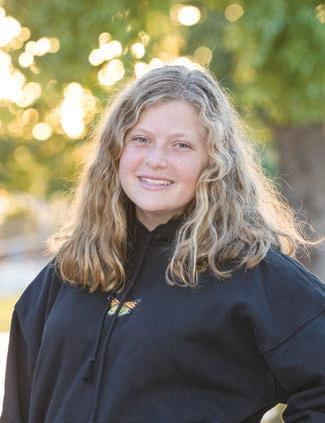
Grandparents are Judith Koenig of Boulder, Colorado, and Joel Koenig of Boulder, Colorado; and Sharon Raskin of Chicago, Illinois and the late Donald Raskin.


For her mitzvah project, Ryan is working with the foundation Lost Our Home, a foster home and food bank for abandoned pets and pets of families going through a hardship or in a crisis. Ryan is collecting dog and cat food for their pet food bank. A student at Cicero Preparatory Academy, she enjoys playing on the school volleyball team. Ryan also enjoys music, baking, traveling, hanging out with her friends and spending time with her family. JN
Young Israel of Phoenix is searching for a new permanent spiritual leader after its previous rabbi resigned.
Rabbi Ari Mandel worked as Young Israel’s head rabbi since February 2018 — and its assistant rabbi since 2015 — and turned in his resignation this summer for personal reasons, according to the shul’s president, David Zuckerman. Zuckerman announced Mandel’s departure in a July newsletter.
In addition to working as a rabbi at Young Israel, Mandel also served as a rabbi at Shaarei Tzedek, and as a substitute teacher at both Torah Day School of Phoenix and Phoenix Hebrew Academy. In the electronic newsletter sent out to Young Israel members to announce the resignation, Zuckerman wished Mandel well. “I want to express gratitude for his service on behalf of myself, the board and the community. He remains a friend and we hope to see him and his family thrive.”
The newsletter also introduced Rabbi Mitch Goldstein, the director of development for Torah Day School of Phoenix, as the first guest rabbi to take over responsibilities until a new
permanent spiritual leader is found.
As of press time, Mandel is still listed as Young Israel’s rabbi on its website.

Prior to Mandel, Rabbi Yossi Bryski was the head rabbi of Young Israel of Phoenix. He began serving the congregation as its rabbi in 2014.
The Orthodox congregation was founded in 1993 and located at Maryland Avenue and Seventh Street. After more than 20 years in that location, the shul moved in 2014 to its current location at 6232 N. Seventh St.
Since Mandel’s departure, Zuckerman has been bringing in local rabbis to assist with services as the board searches for a new rabbi.
Through more newsletters, the administration has been able to keep in touch with its congregants about the situation.
“We are actively seeking a rabbi, but will be taking as much time as needed to find the best candidate for our community, and to give our full membership the opportunity to have input in this process,” an August newsletter said.
Another newsletter communicated Zuckerman’s optimism about the future of Young Israel of Phoenix and its
He proudly served in the Air Force, stationed in Japan, and returned to New York and attended Columbia and the New York University School of Law. He was an attorney at the National Labor Relations Board. His dream was to transfer to Arizona as soon as he could with his family, and he happily settled in Phoenix in 1967. After retirement, he made national headlines with a lawsuit against Toyota.
He was a gifted classical pianist, danced the cha-cha, contemplated the cosmos and was a romantic. Natalie was the light of his life. He loved his daughters, Anne Z. Lang (Daniel) and Alisa Z. Shorr (Kenneth), from A to Z and found joy in each of his beautiful grandchildren, Reuven Shorr, Ezra Shorr, Zoe Lang and Aidan Lang; and his great-grandchildren, Elijah Nogales and Benjamin Shorr.
He was buried next to his bride at Paradise Valley Cemetery on Sept. 4, 2019. Donations in his memory can be made to: National Jewish Health, P.O. Box 17169, Denver, CO 80217-0169.
search for a rabbi.
Goldstein will be Young Israel’s spiritual leader for the upcoming Rosh Hashanah services.
Mandel, Zuckerman and other shul leadership did not respond to requests for an interview. JN

































































